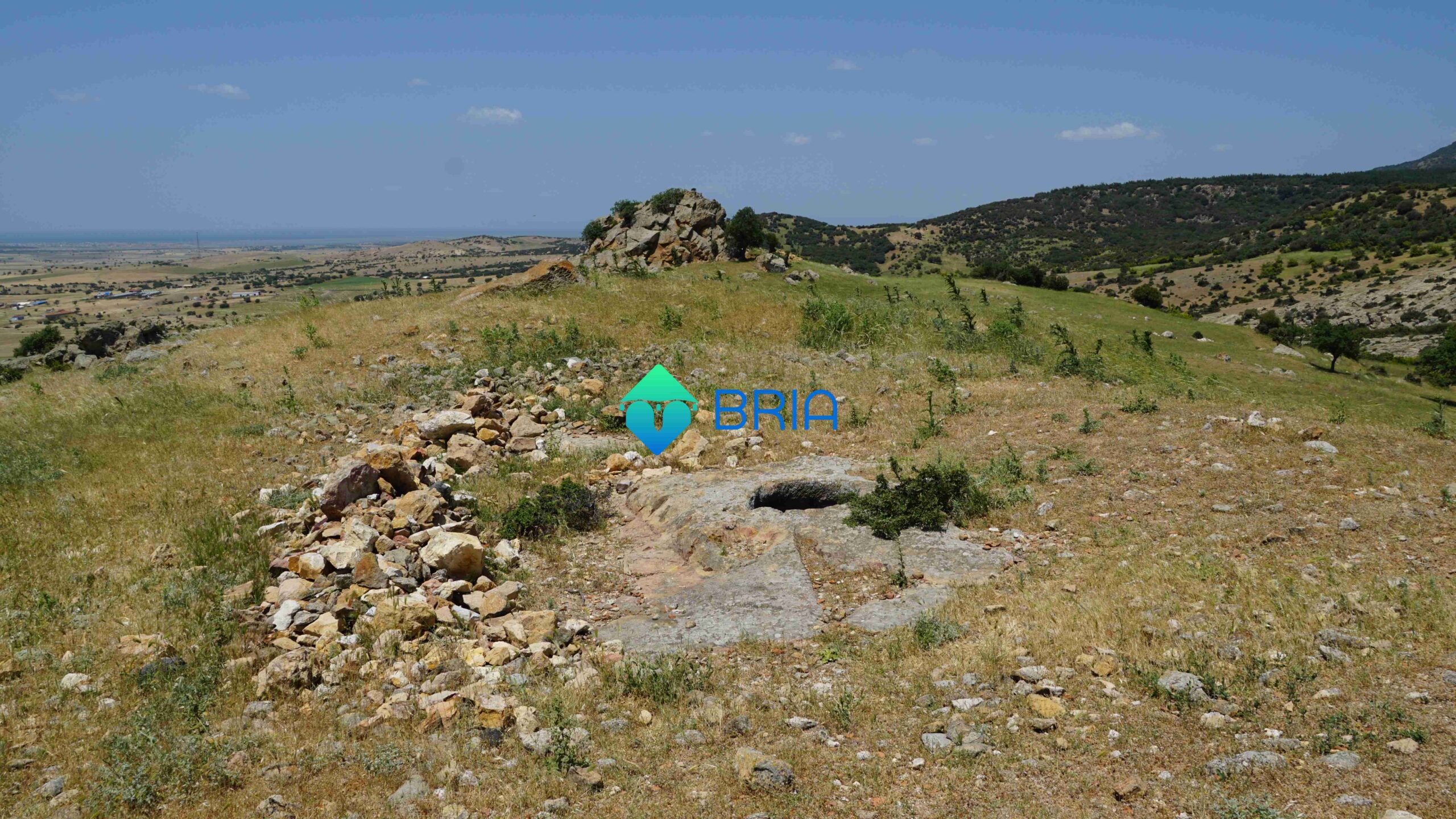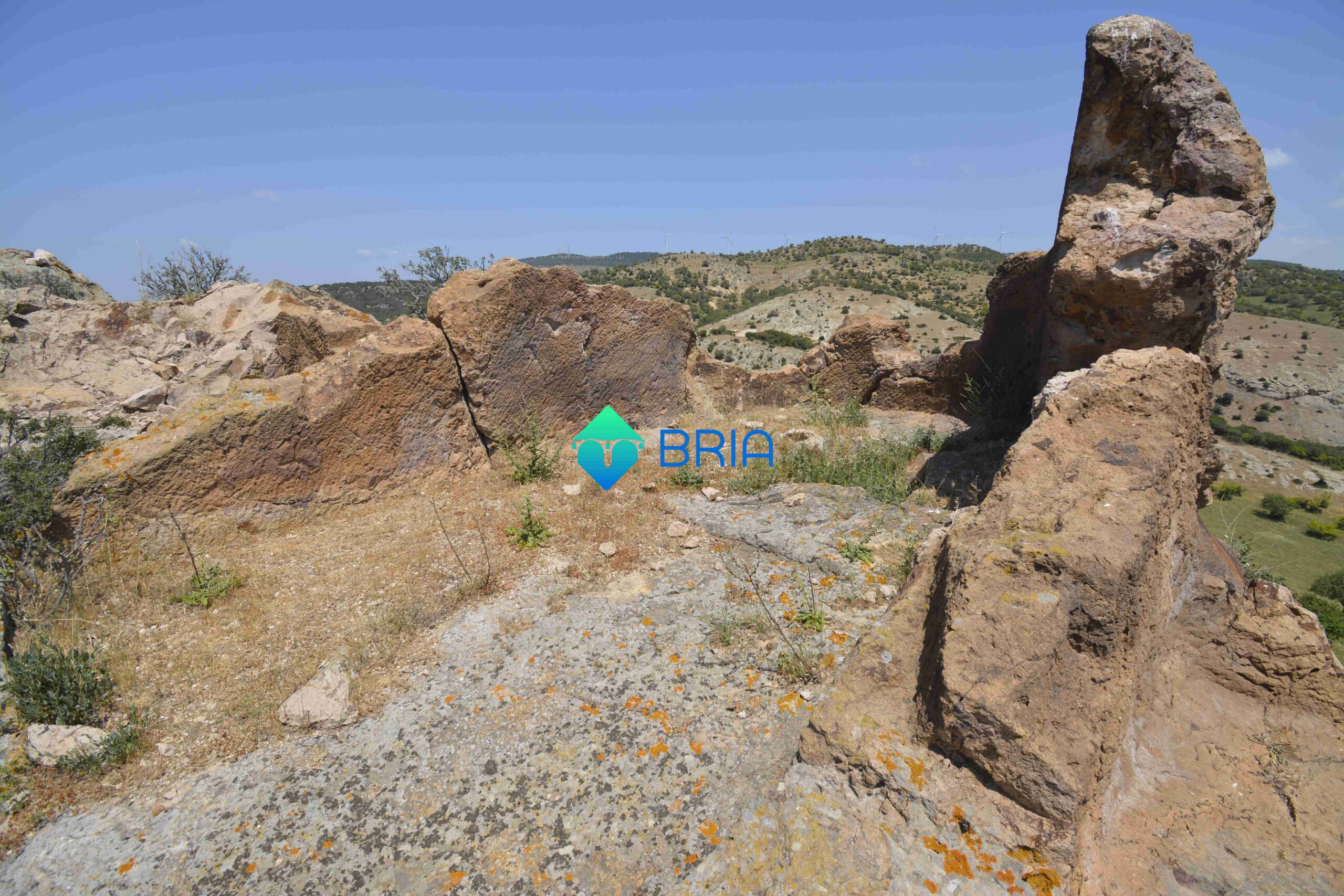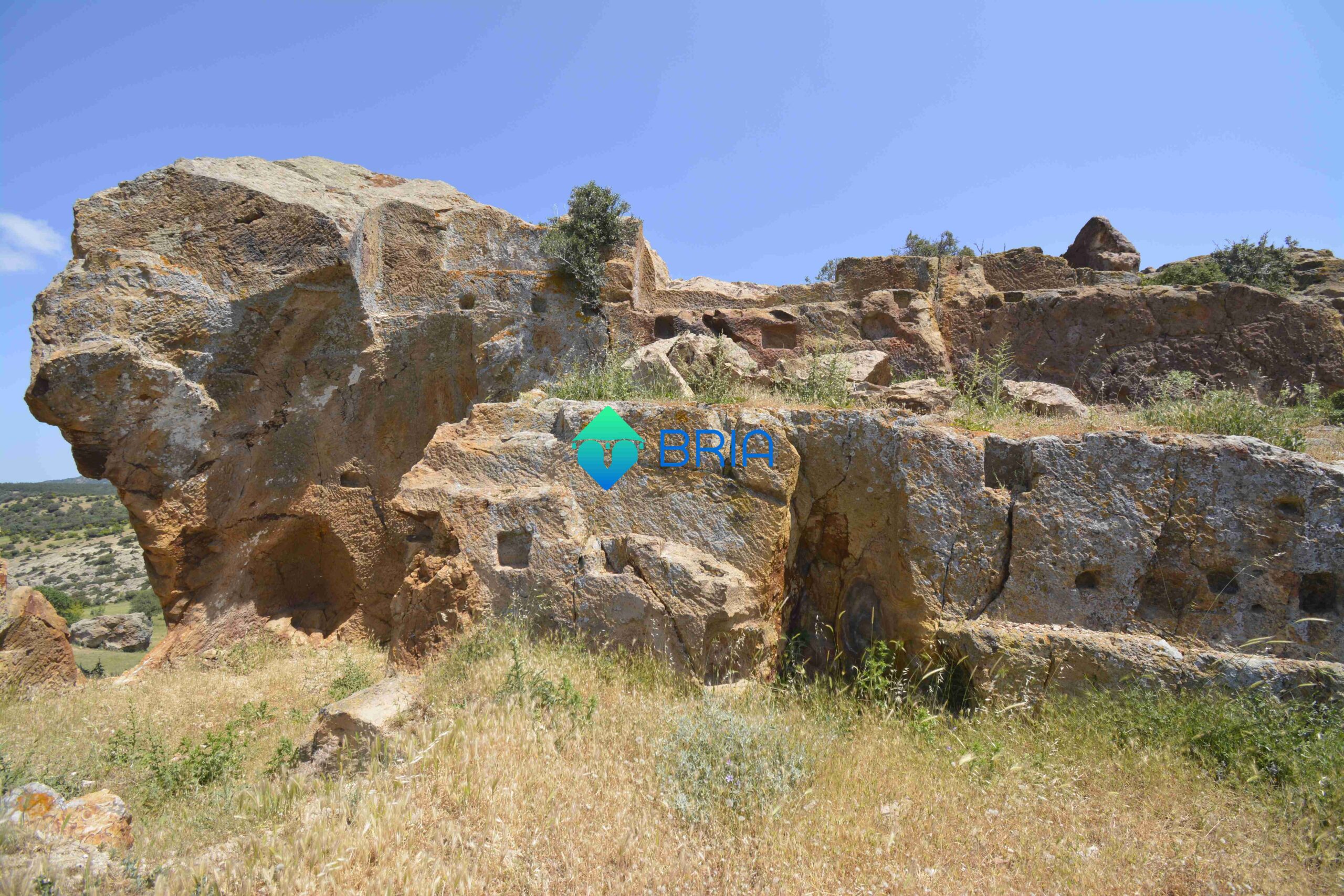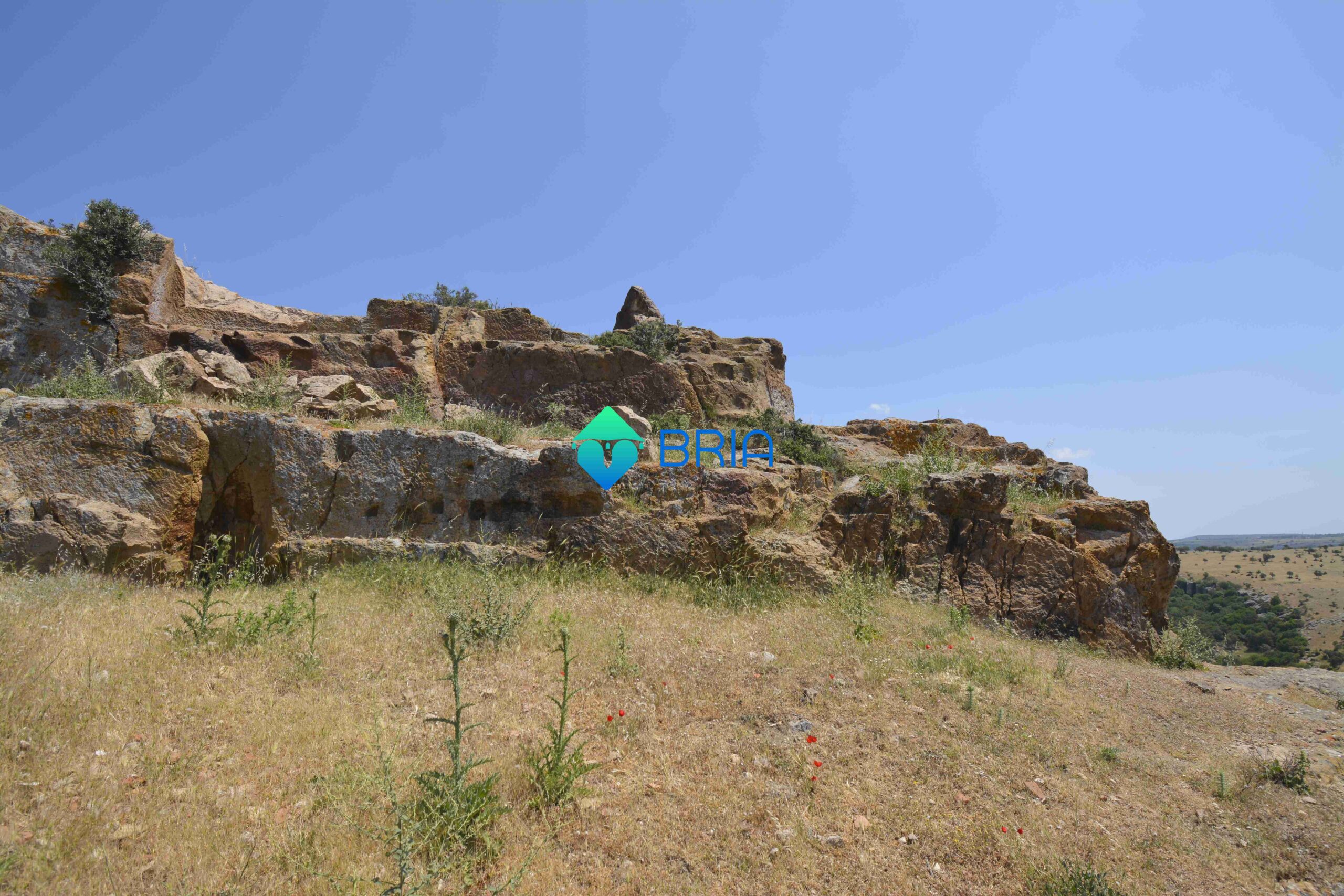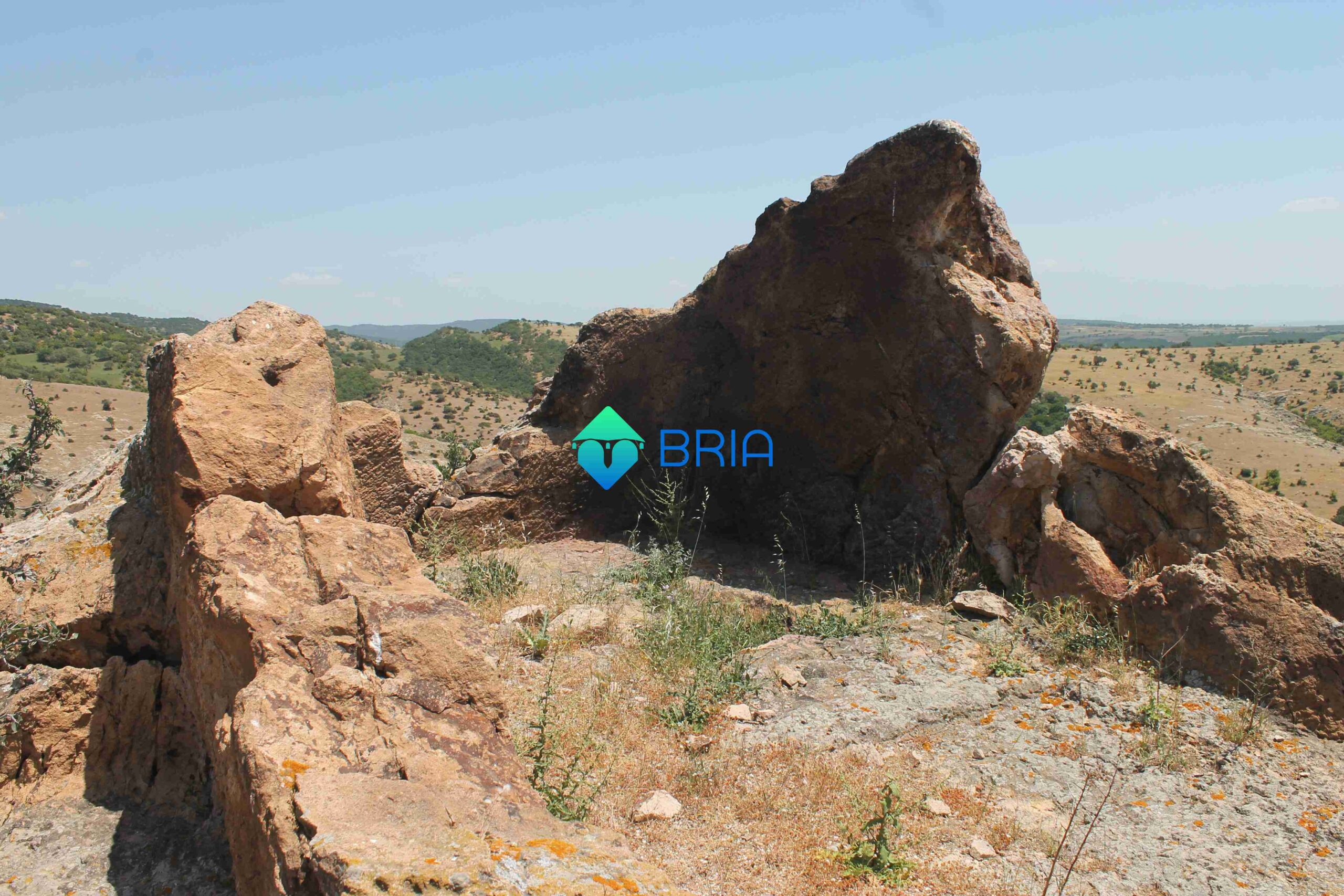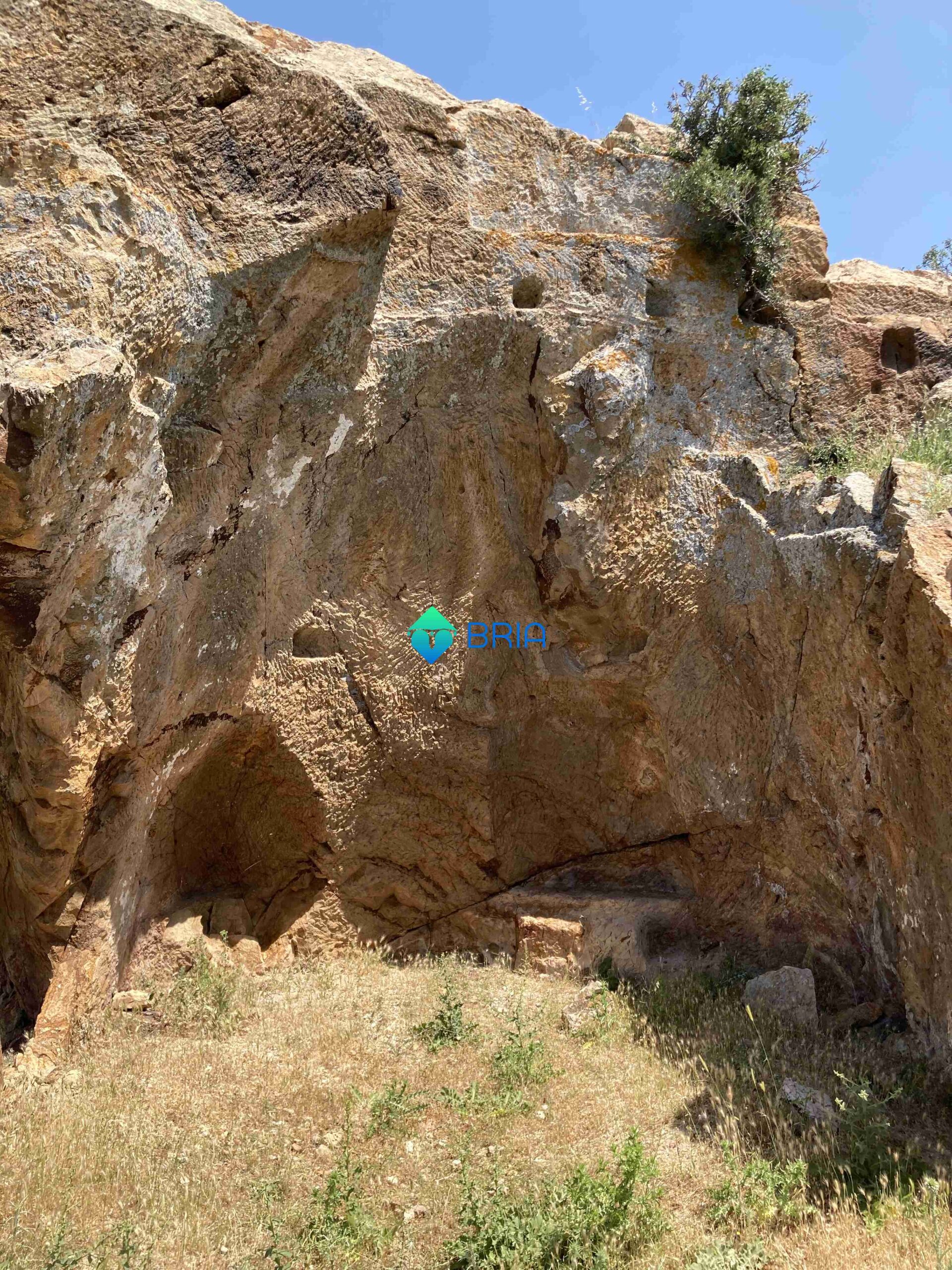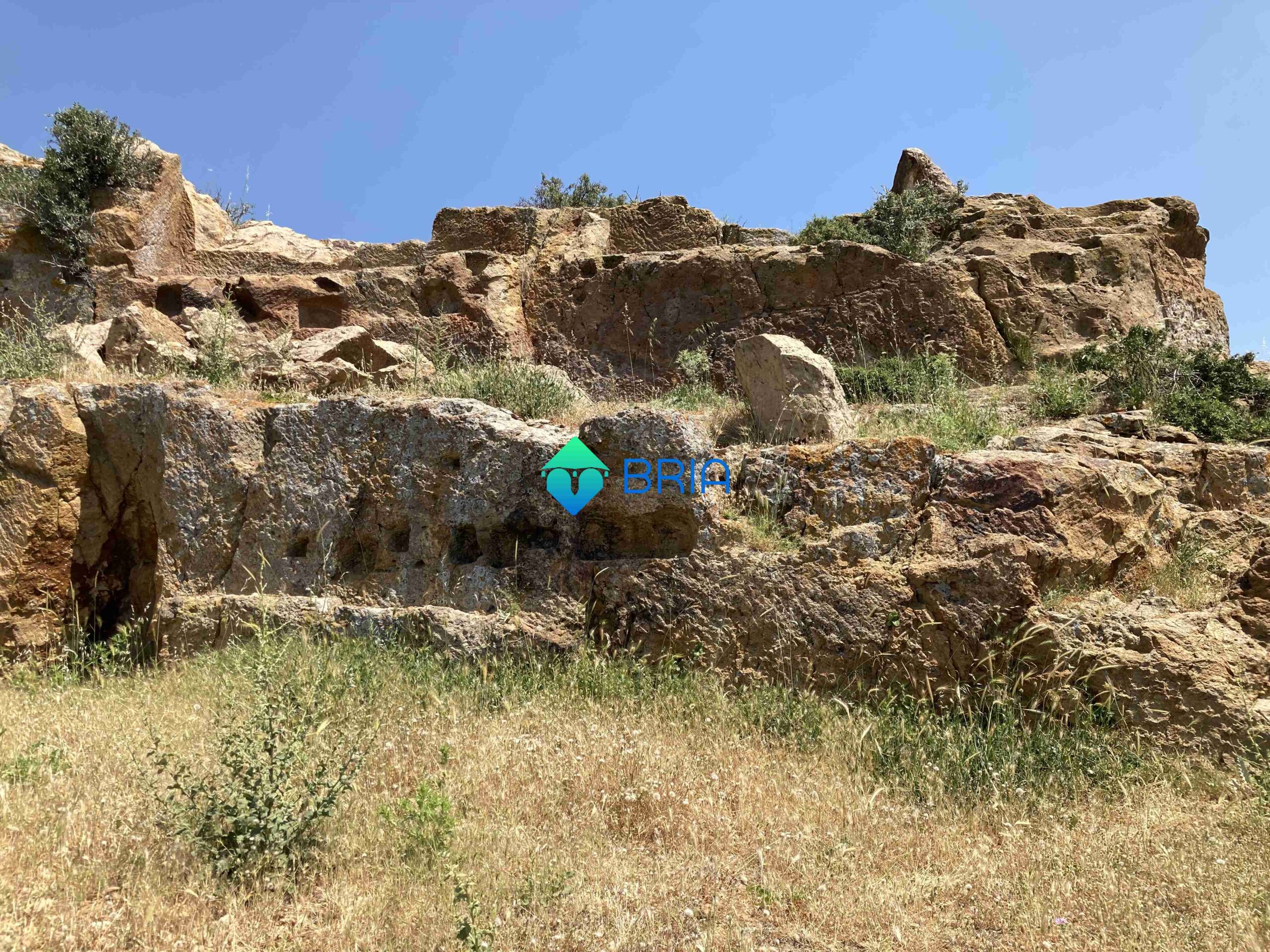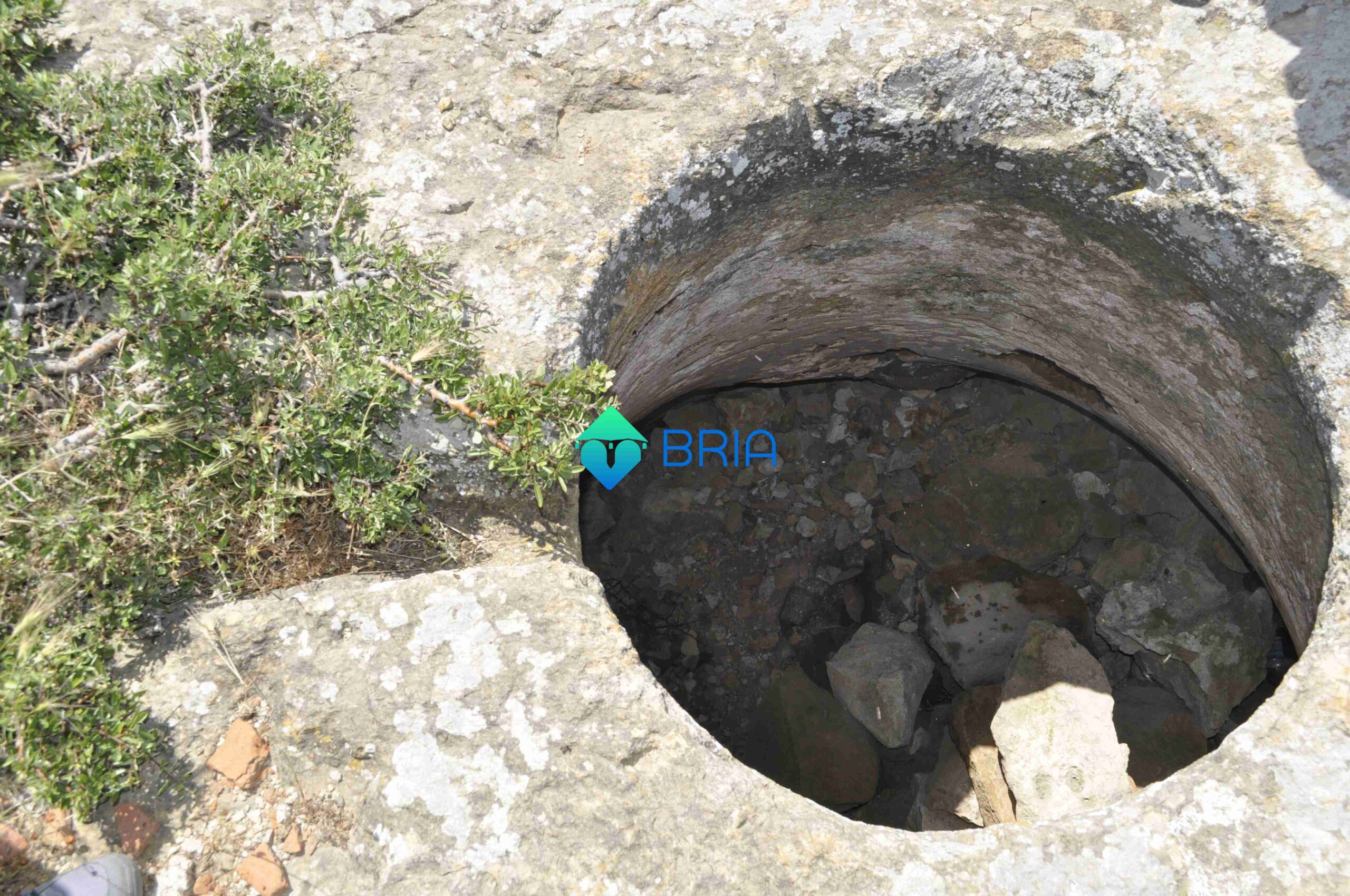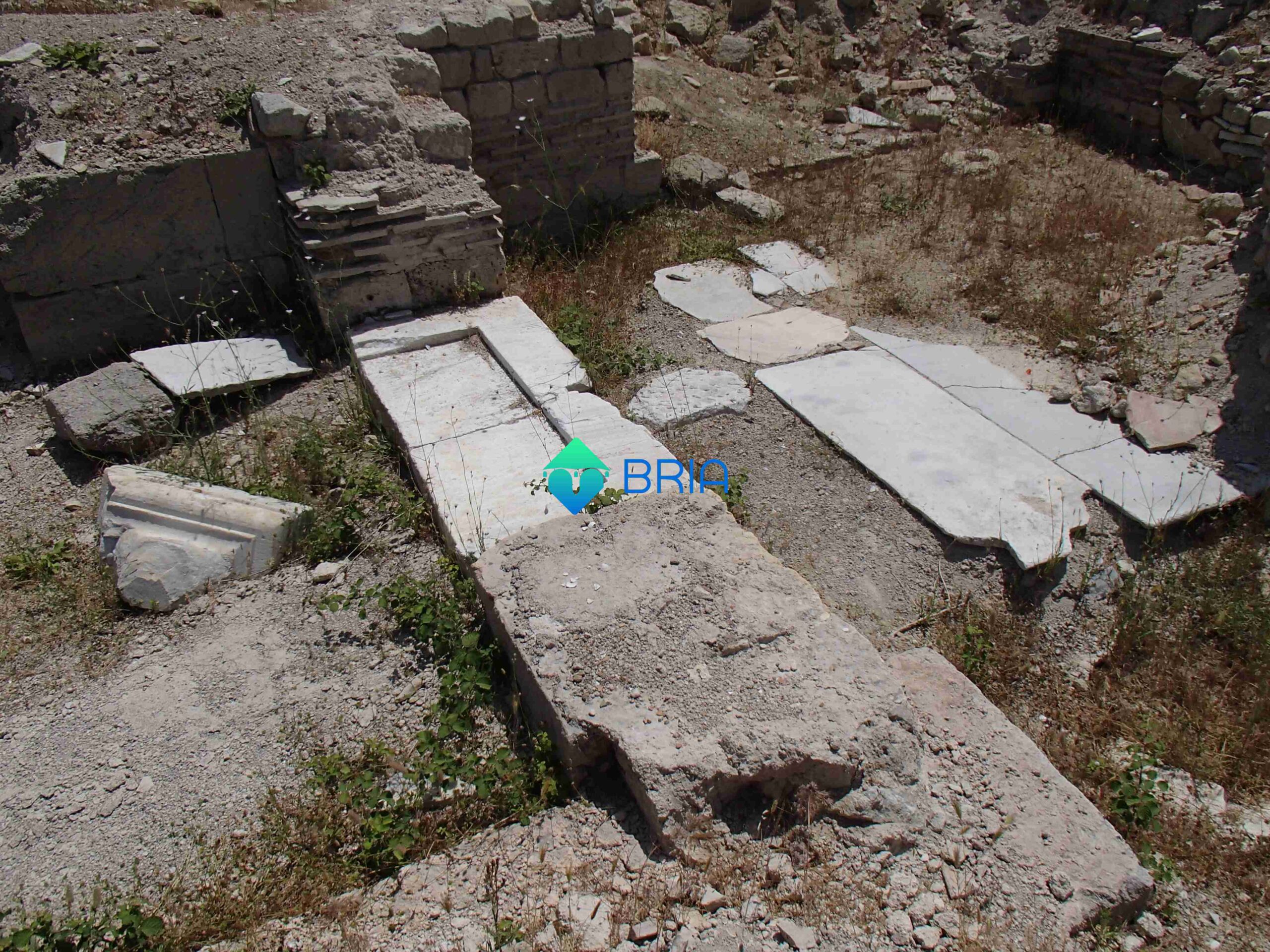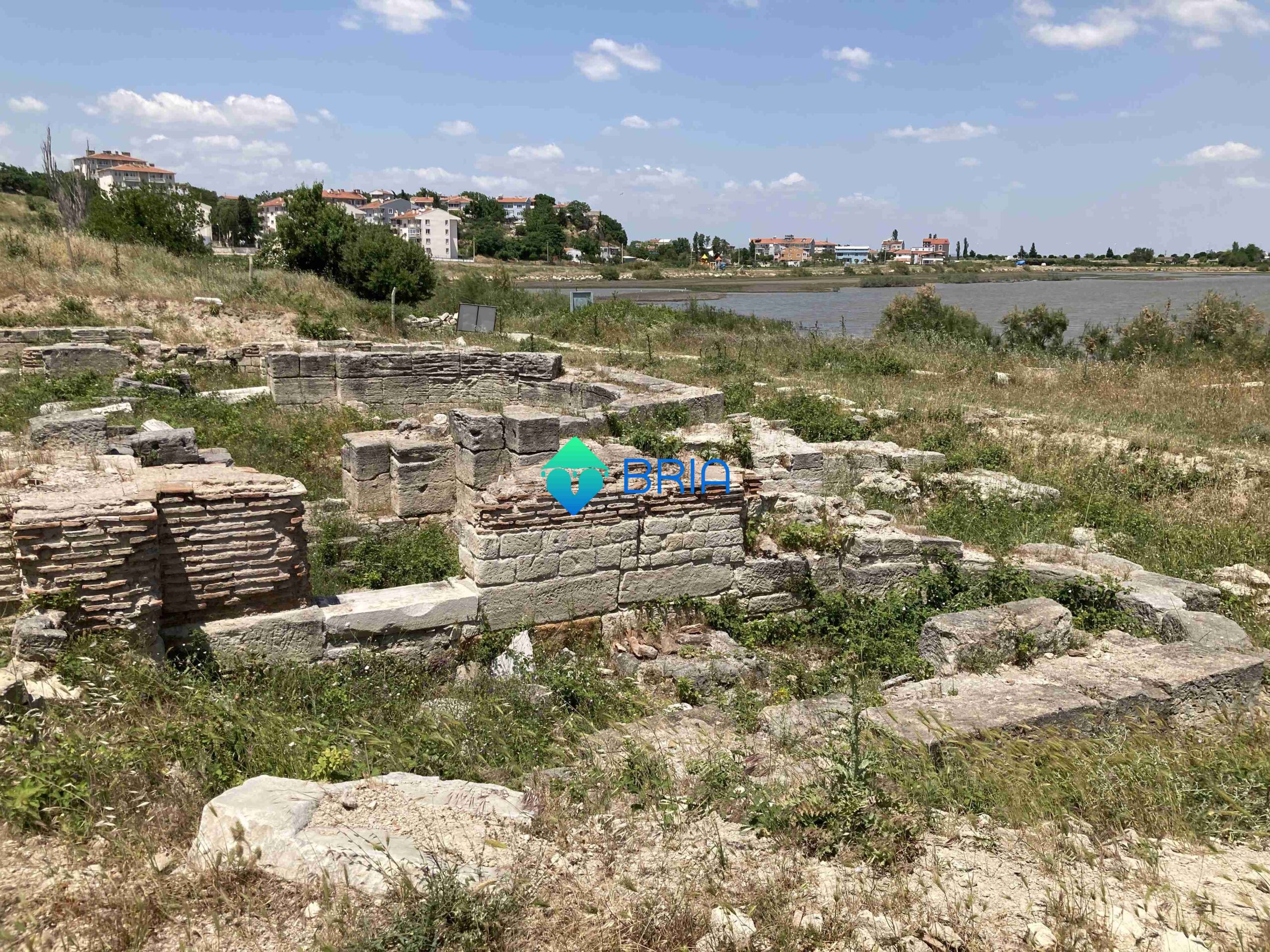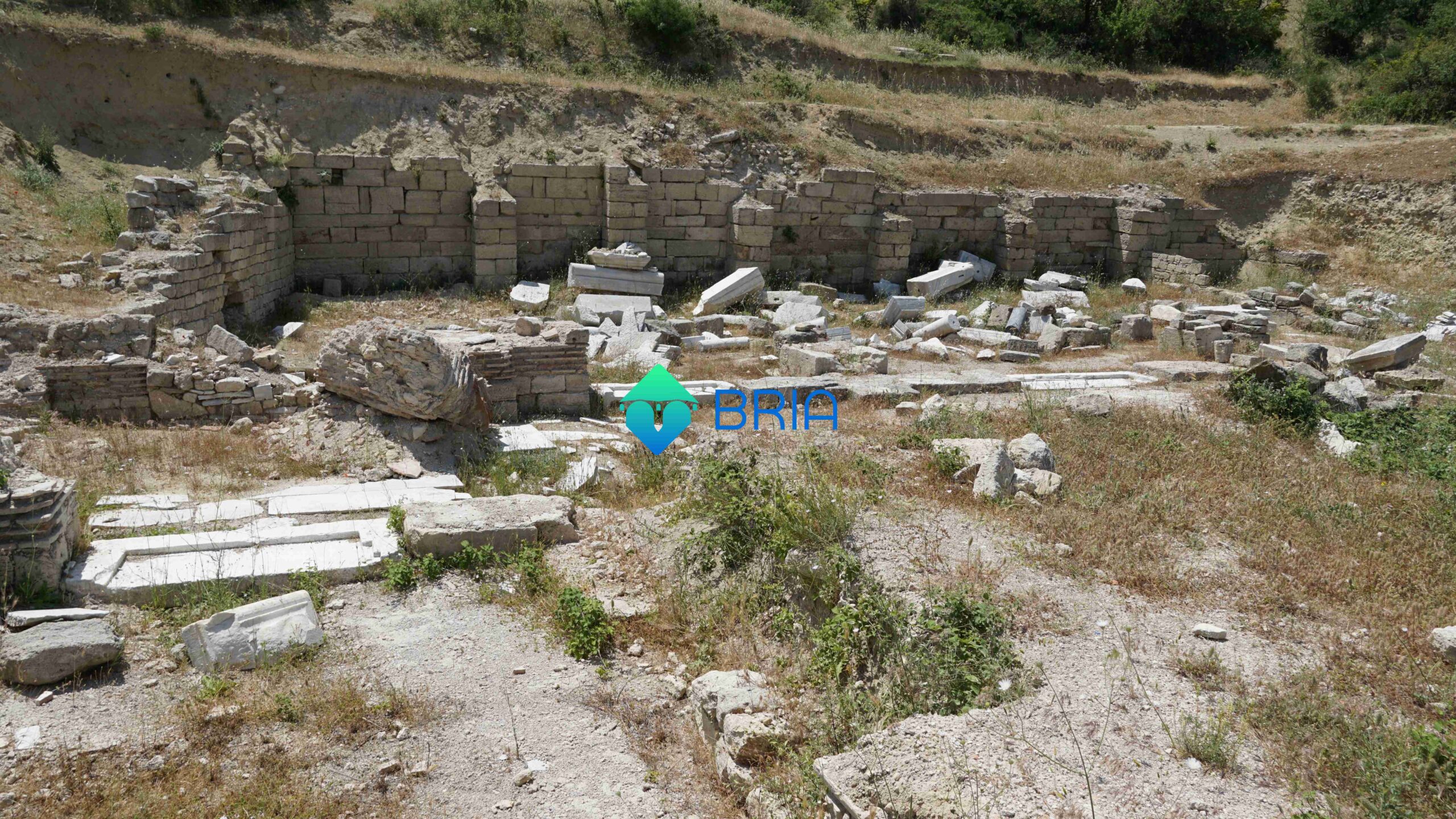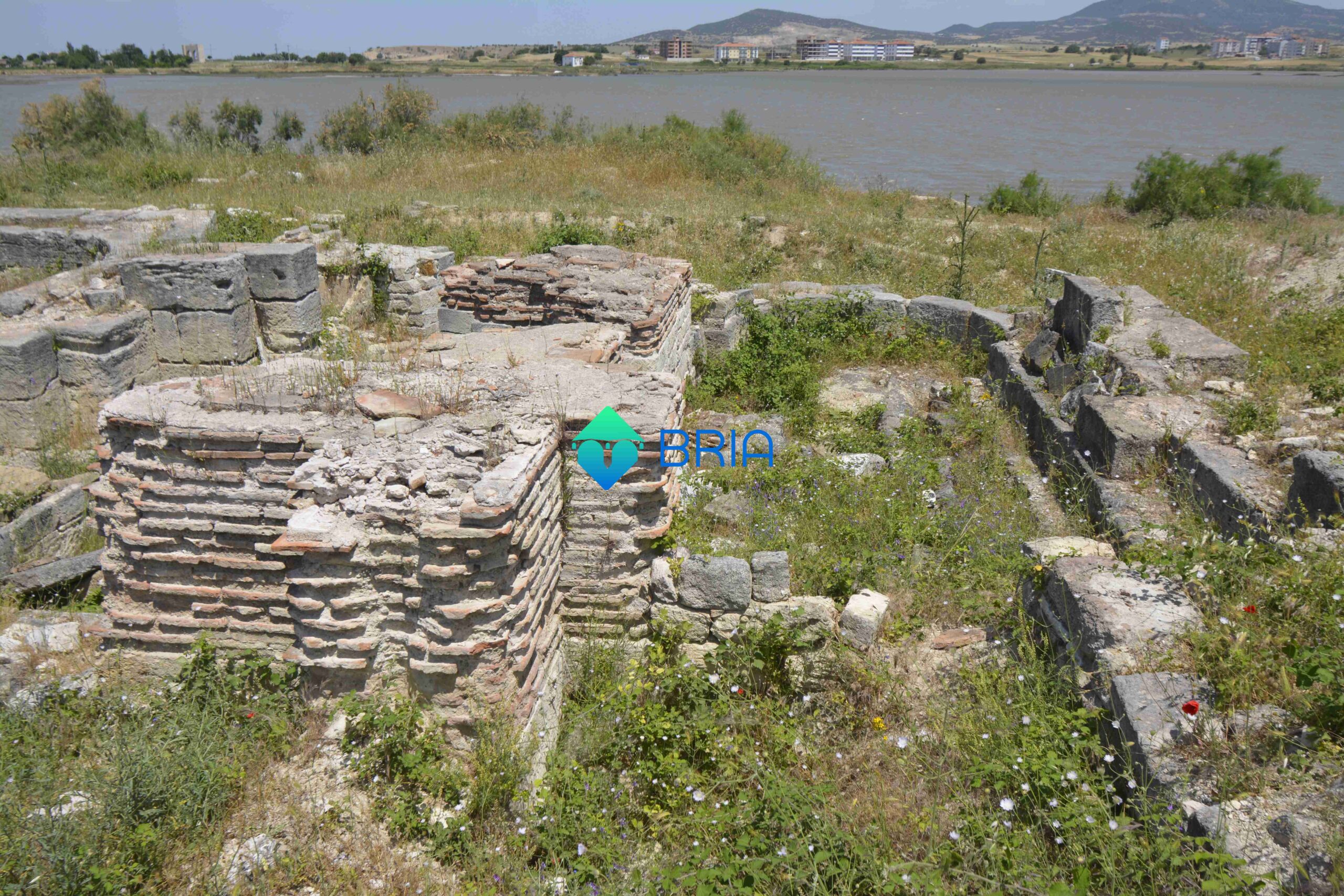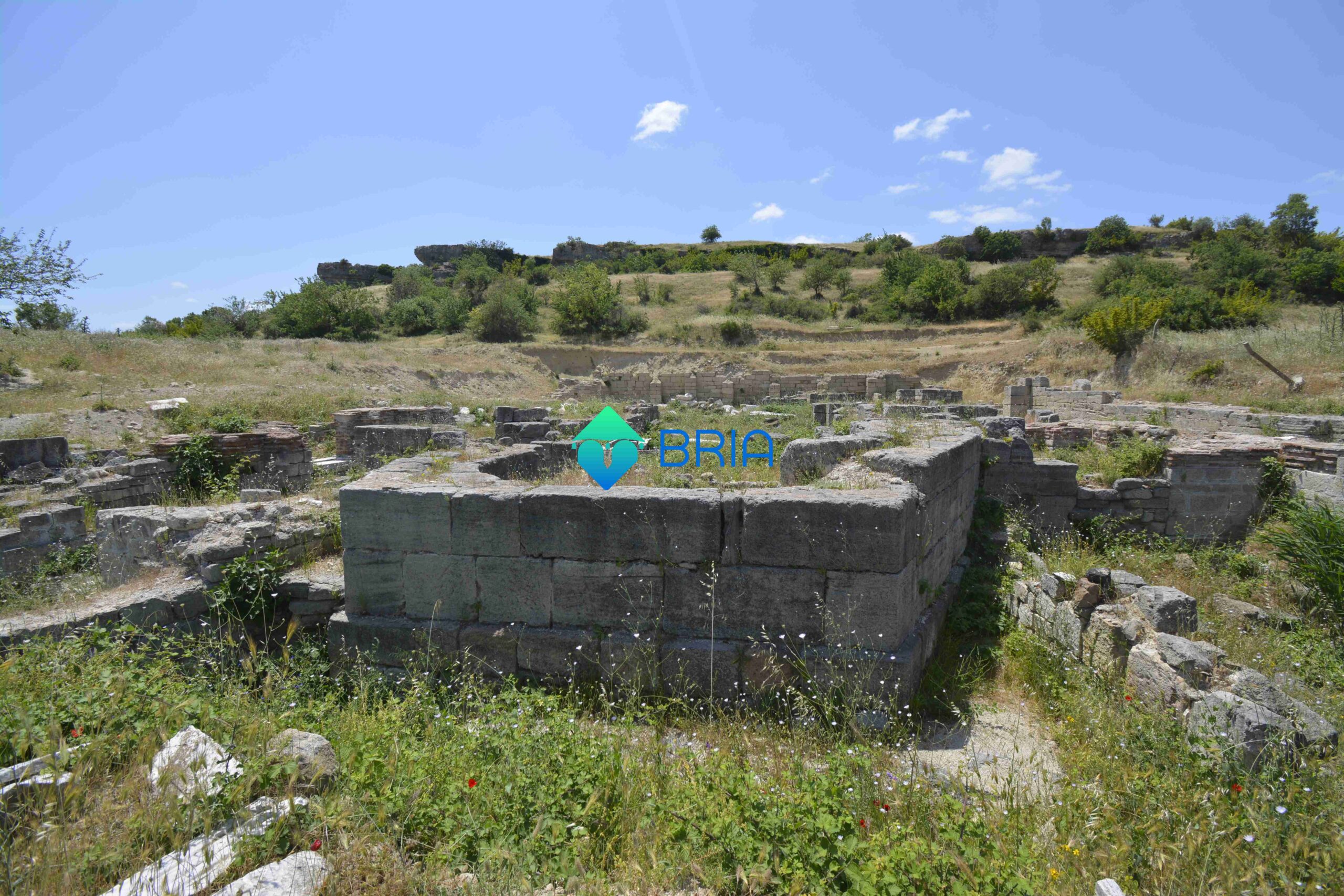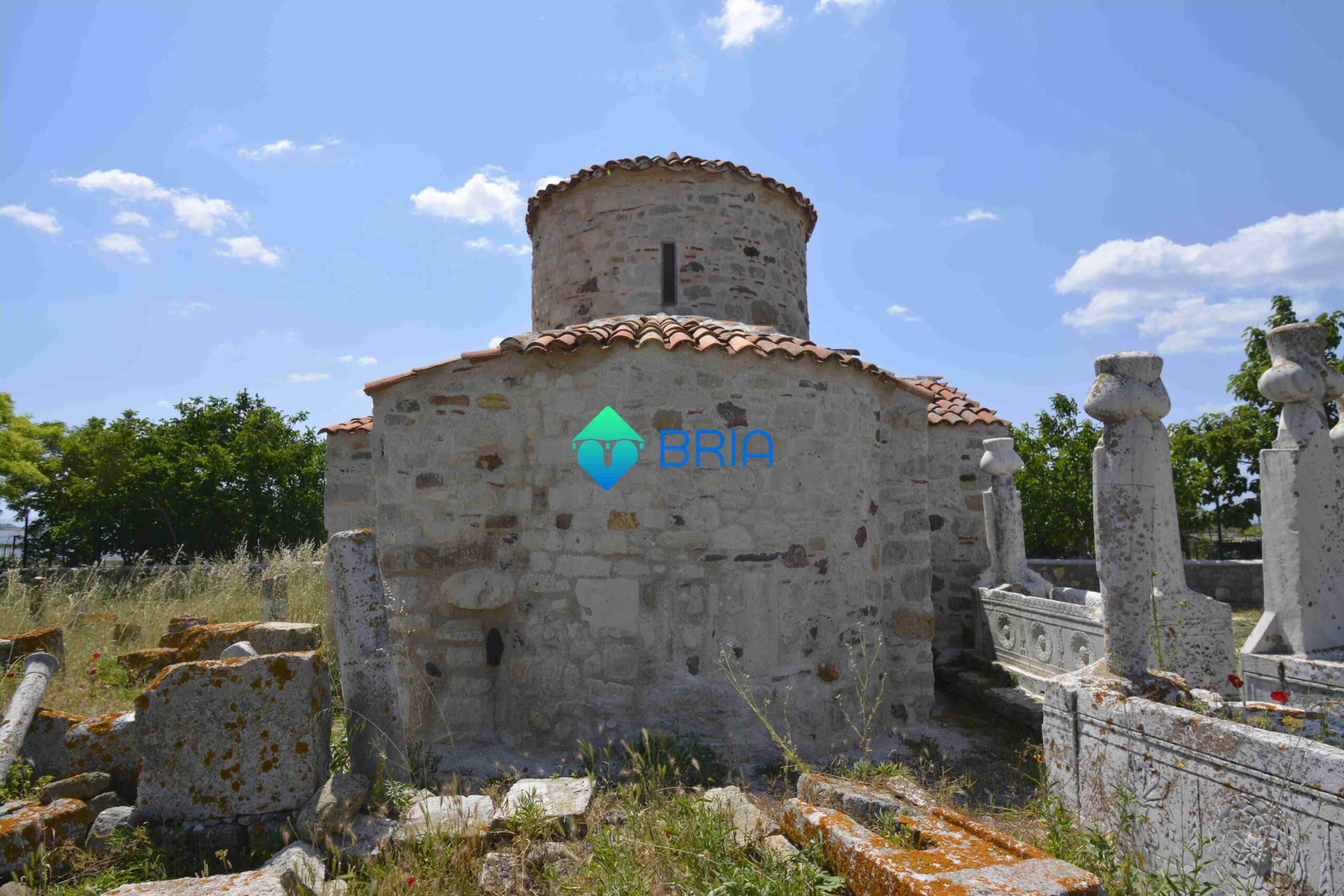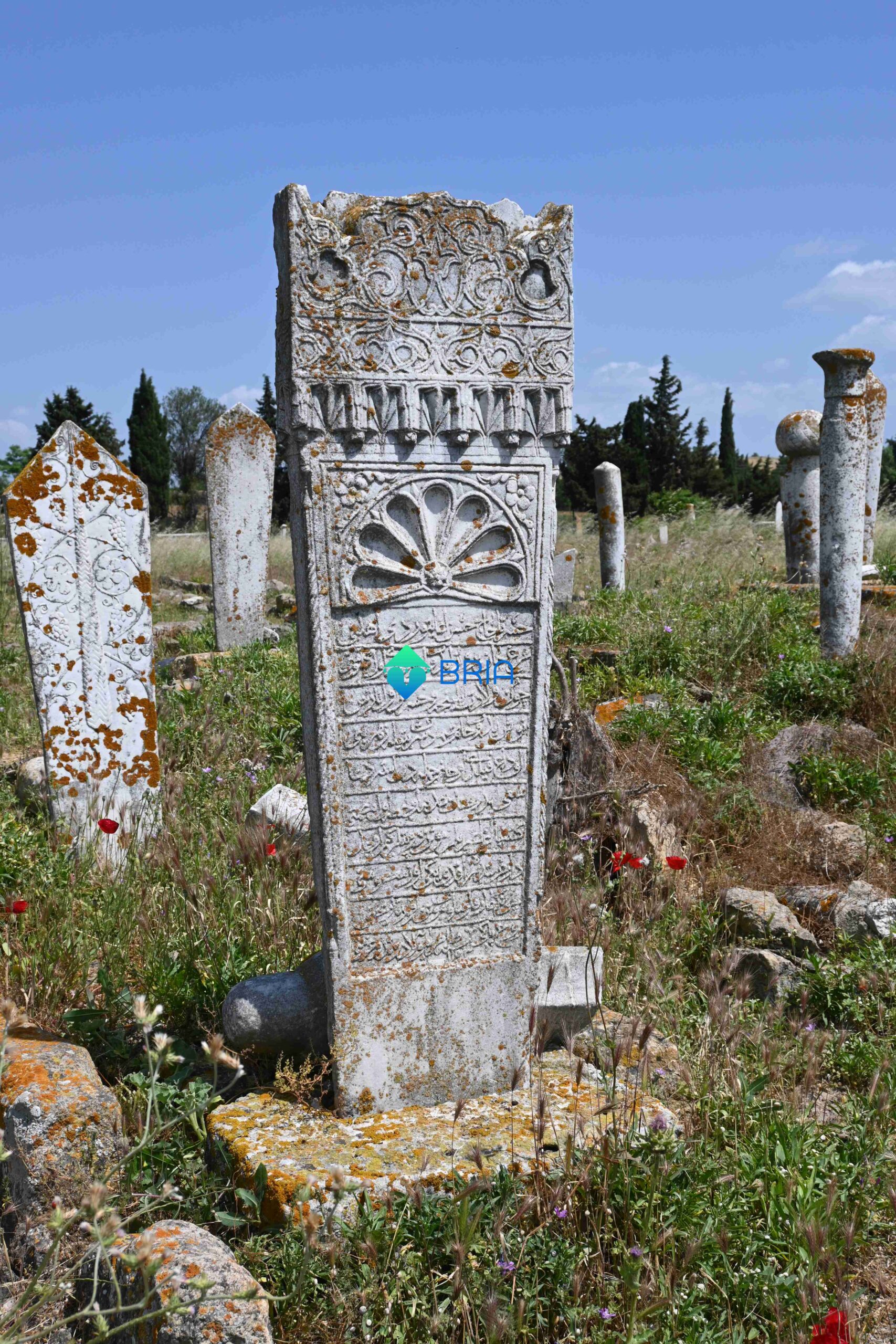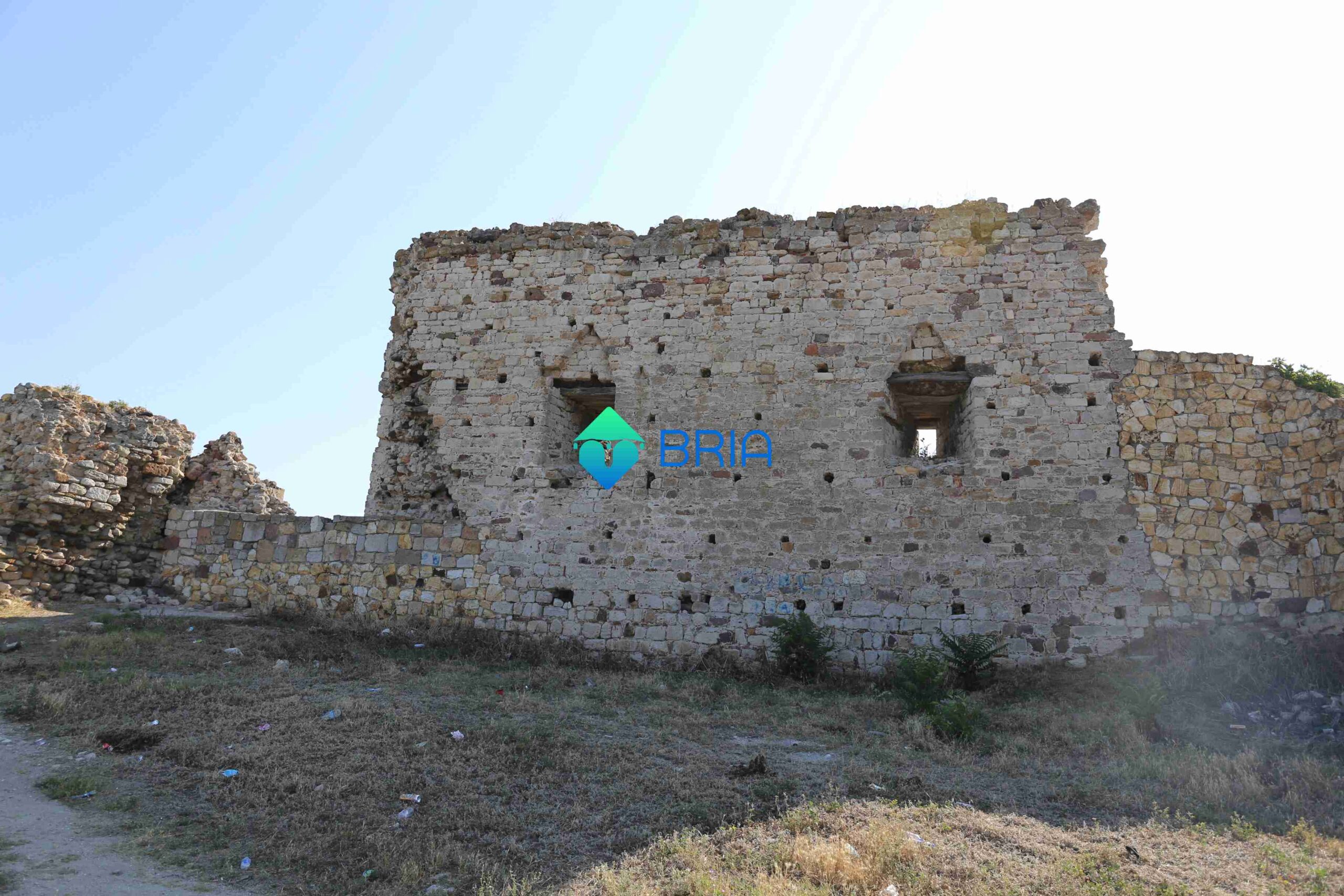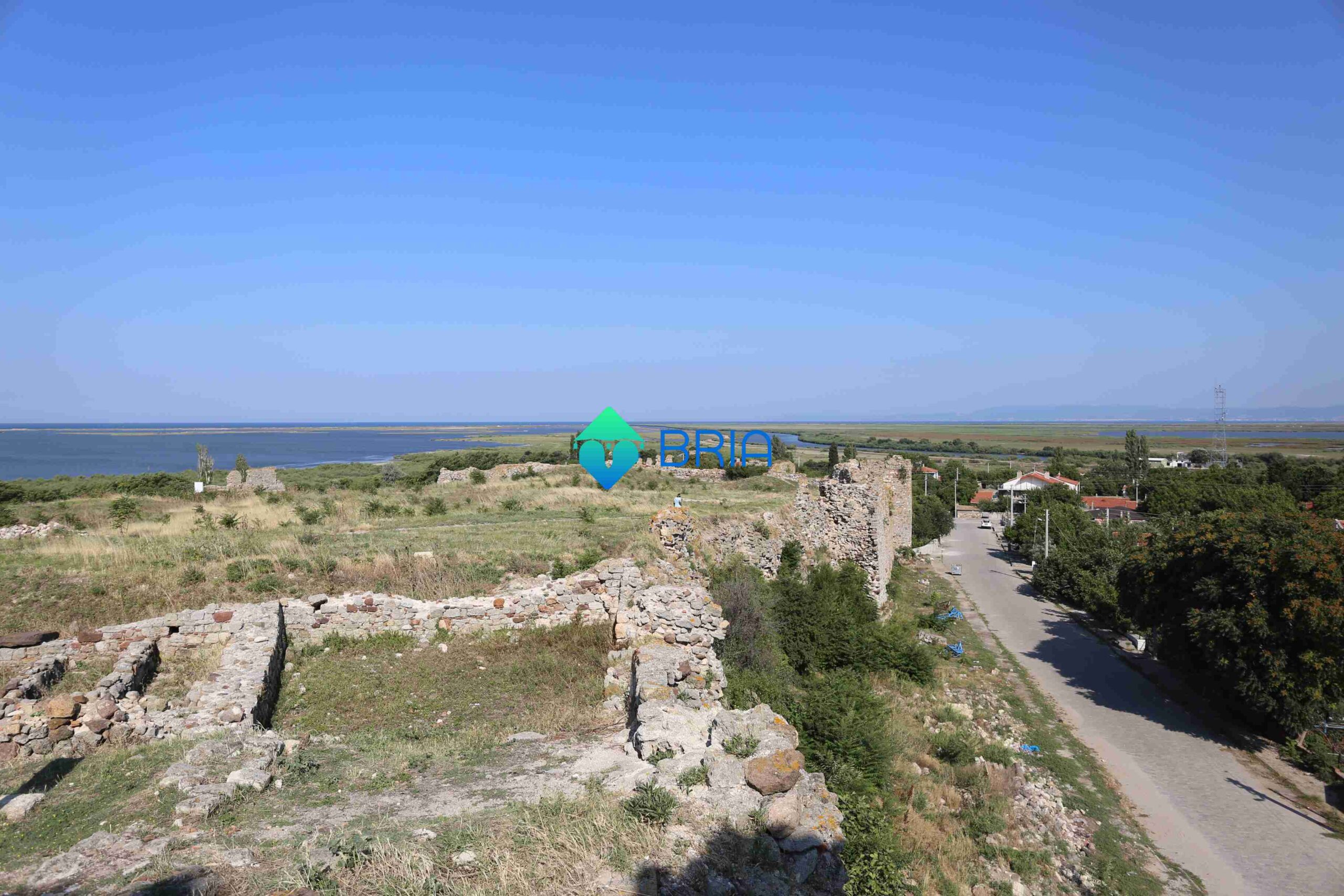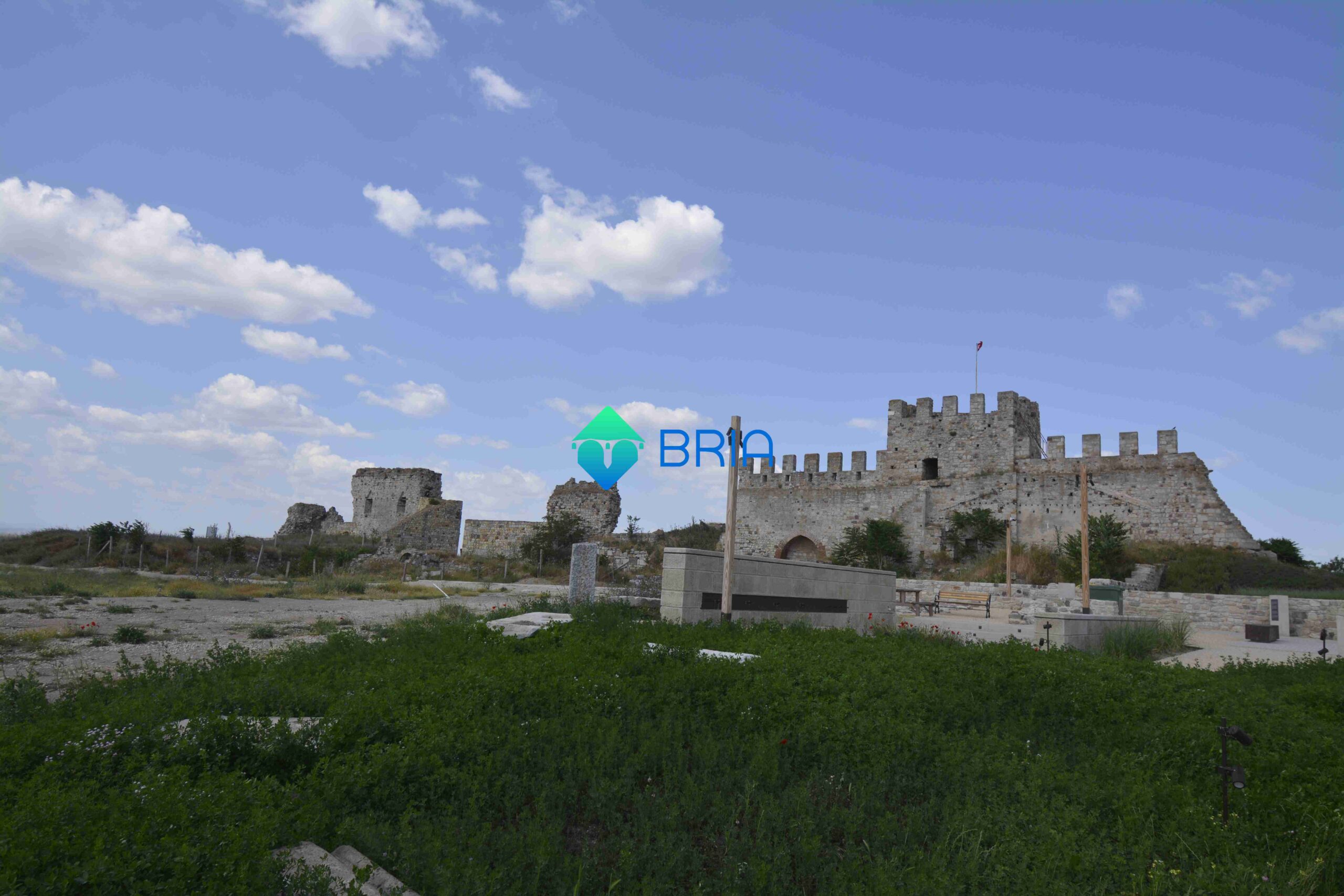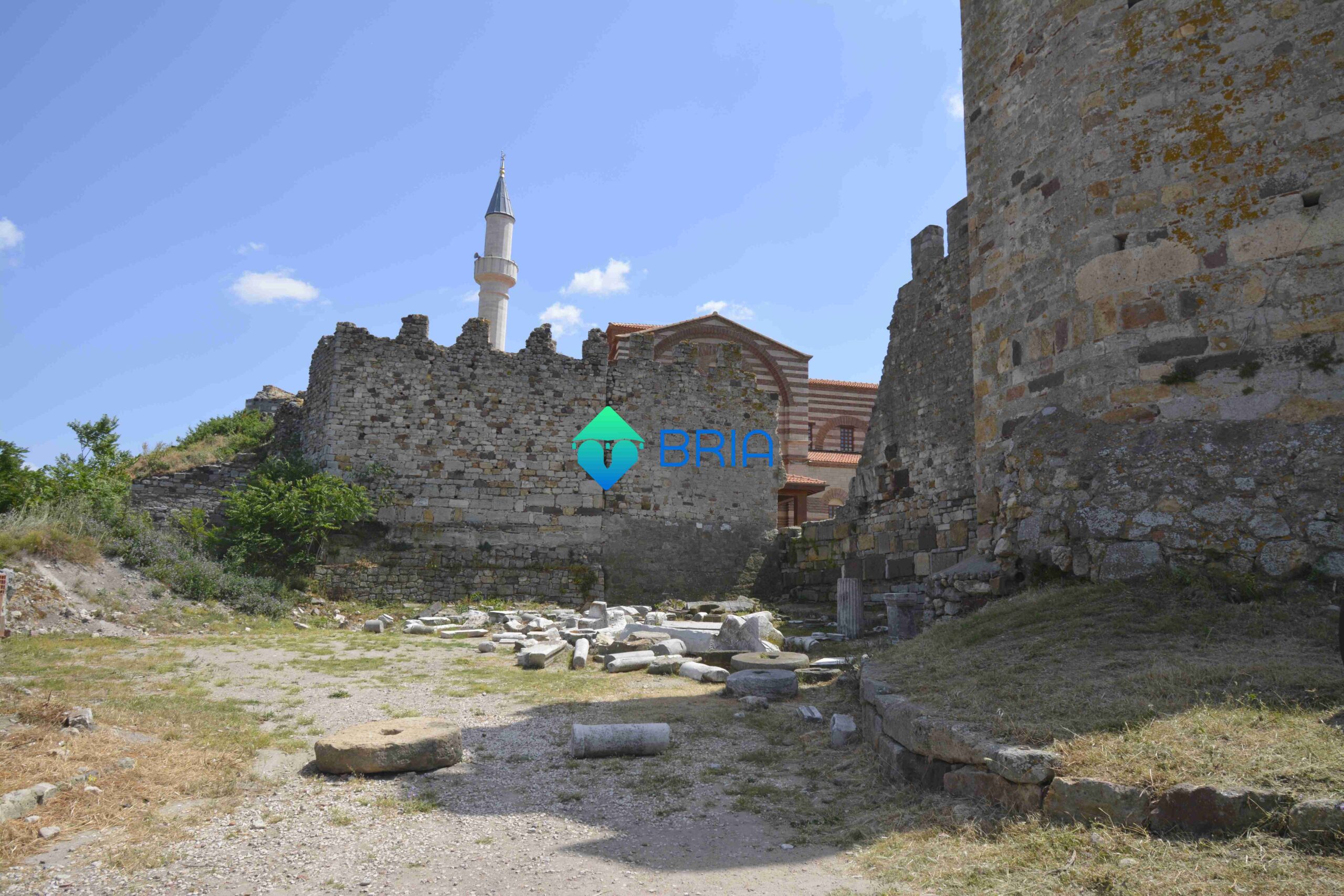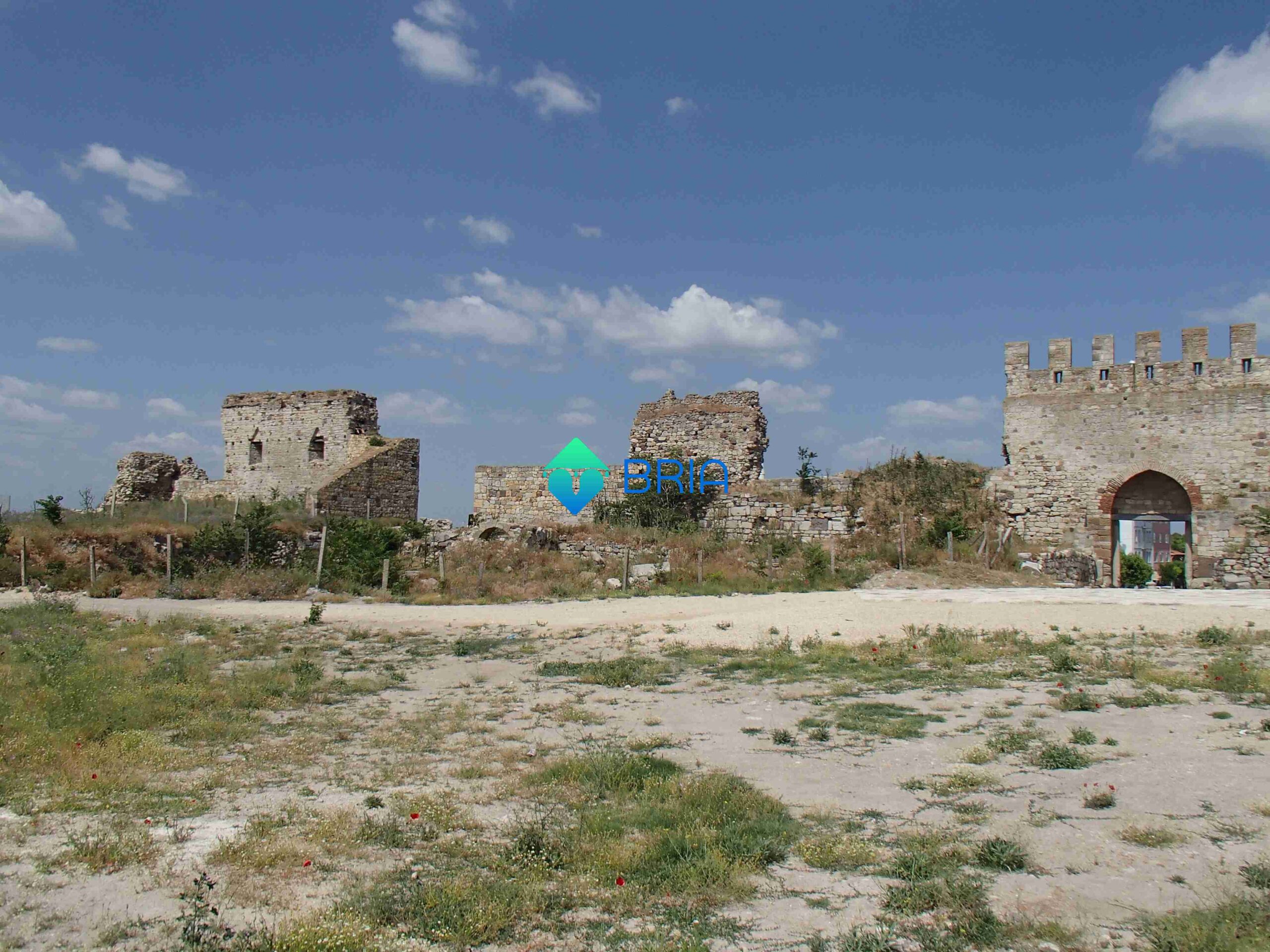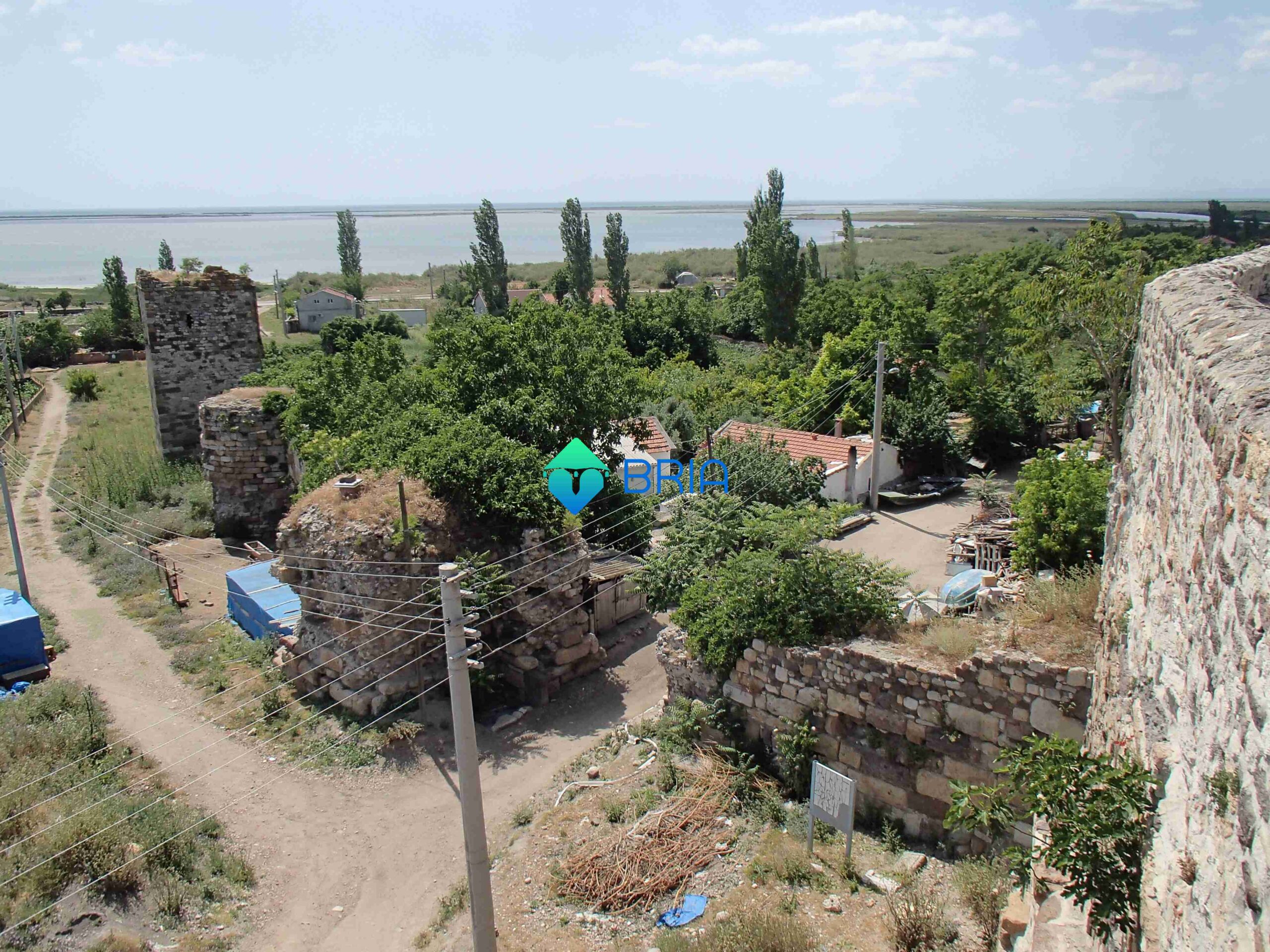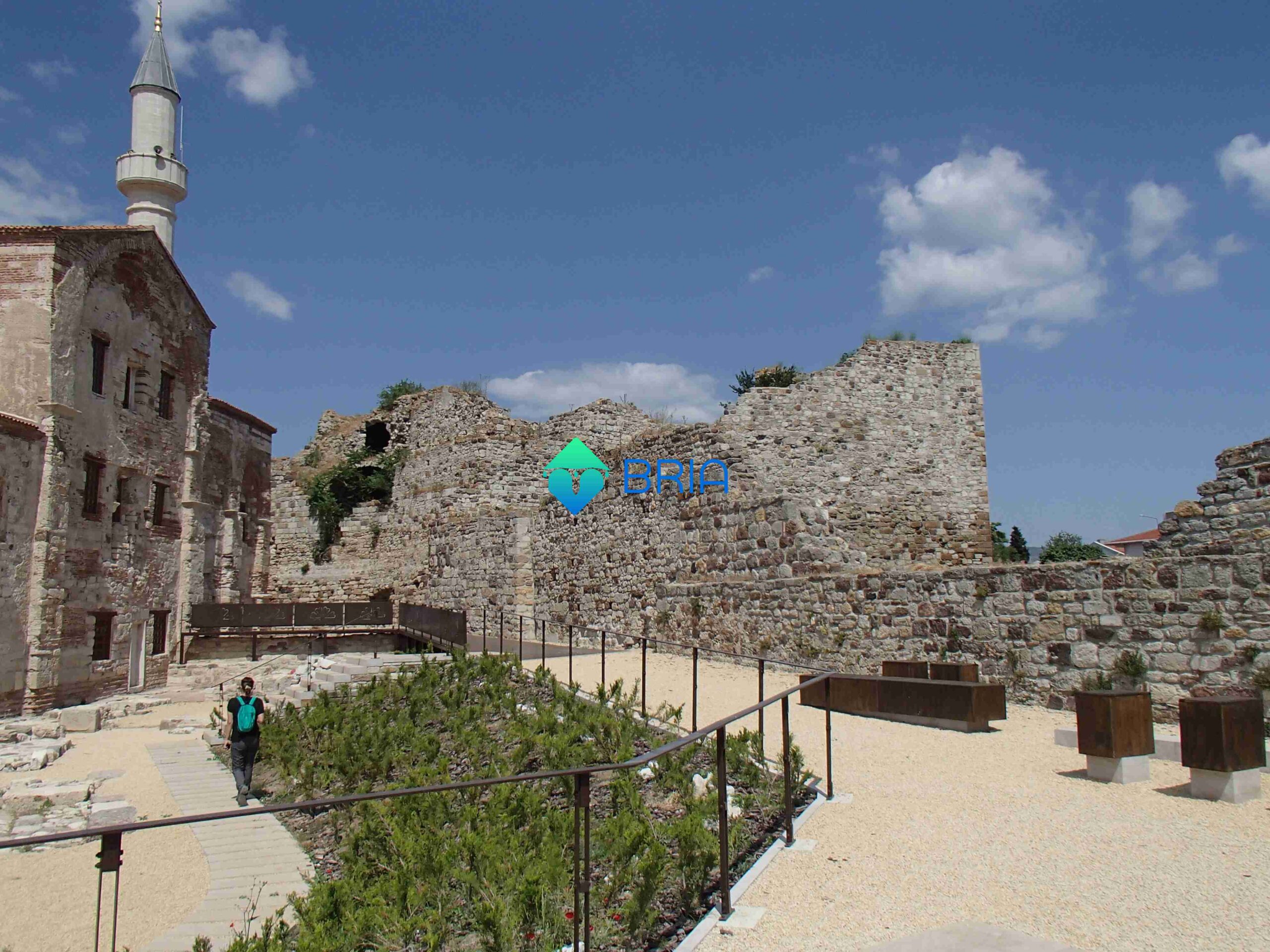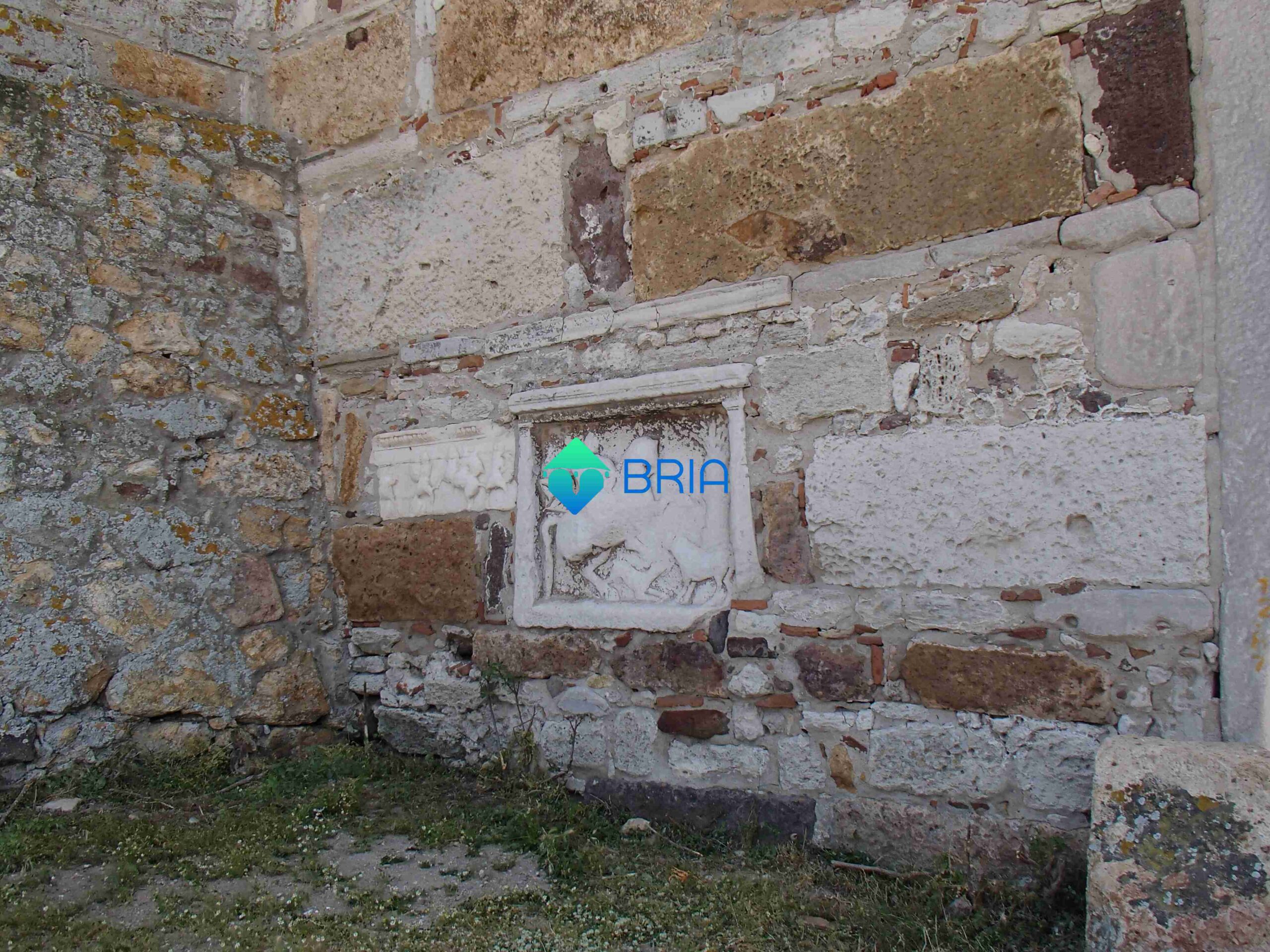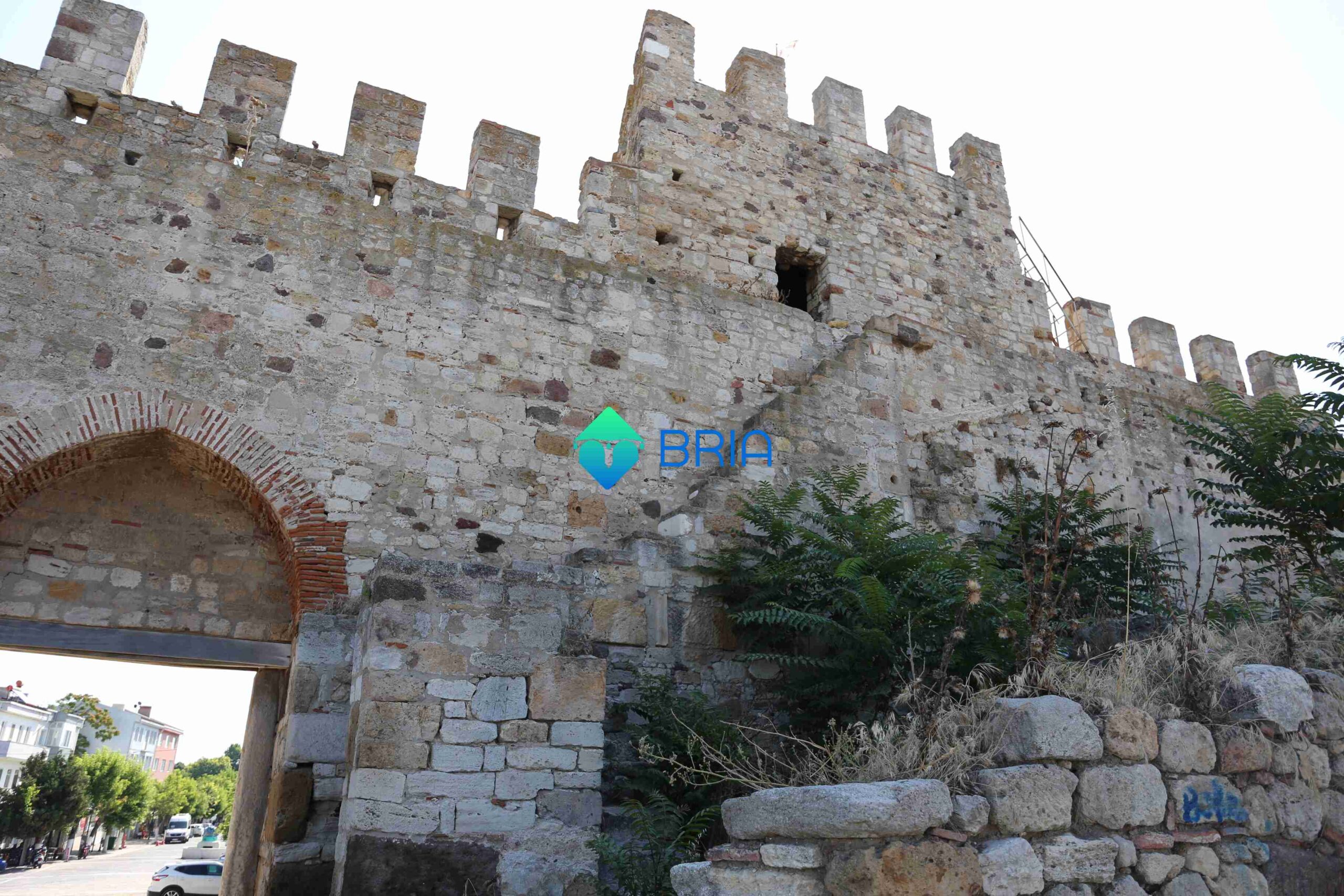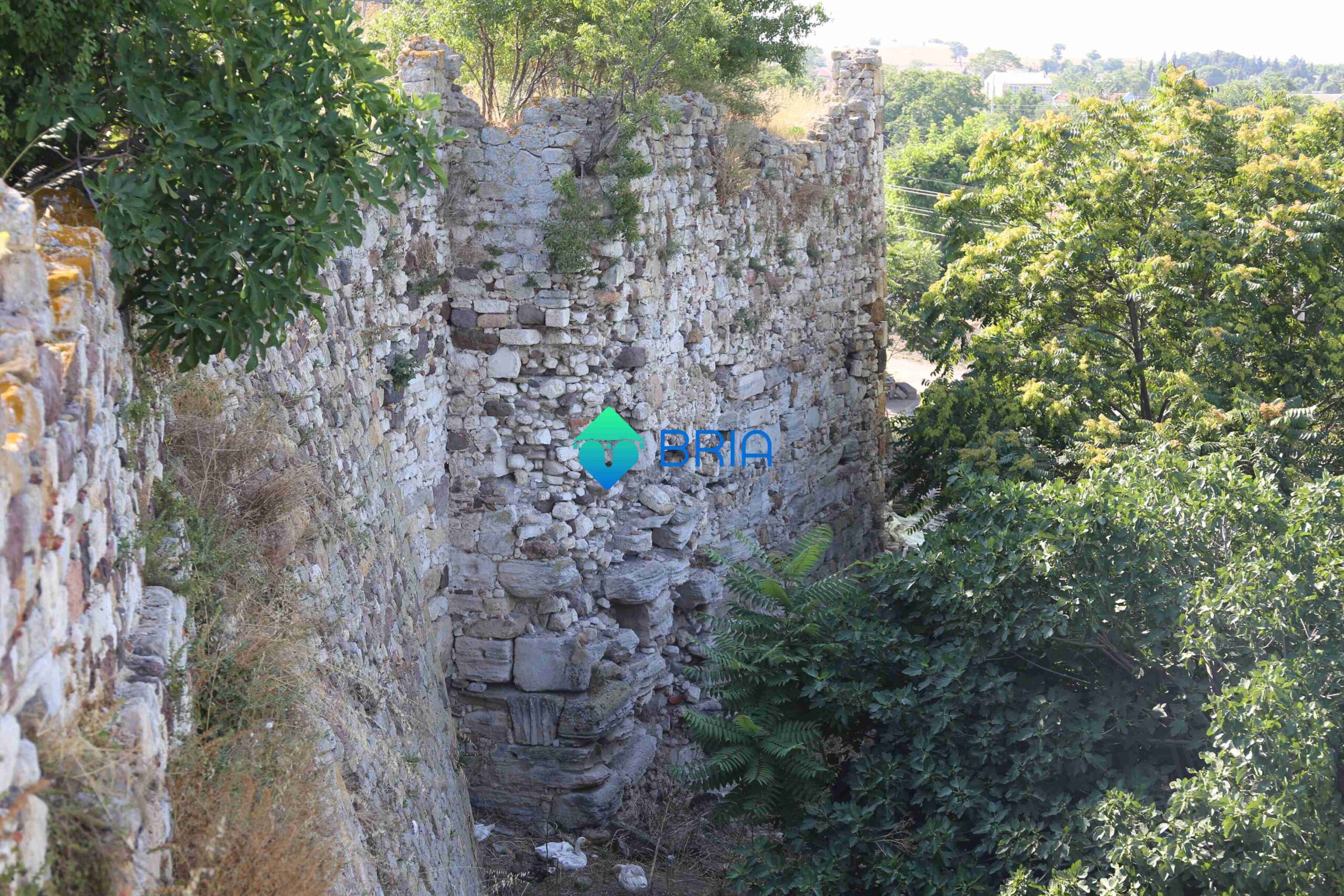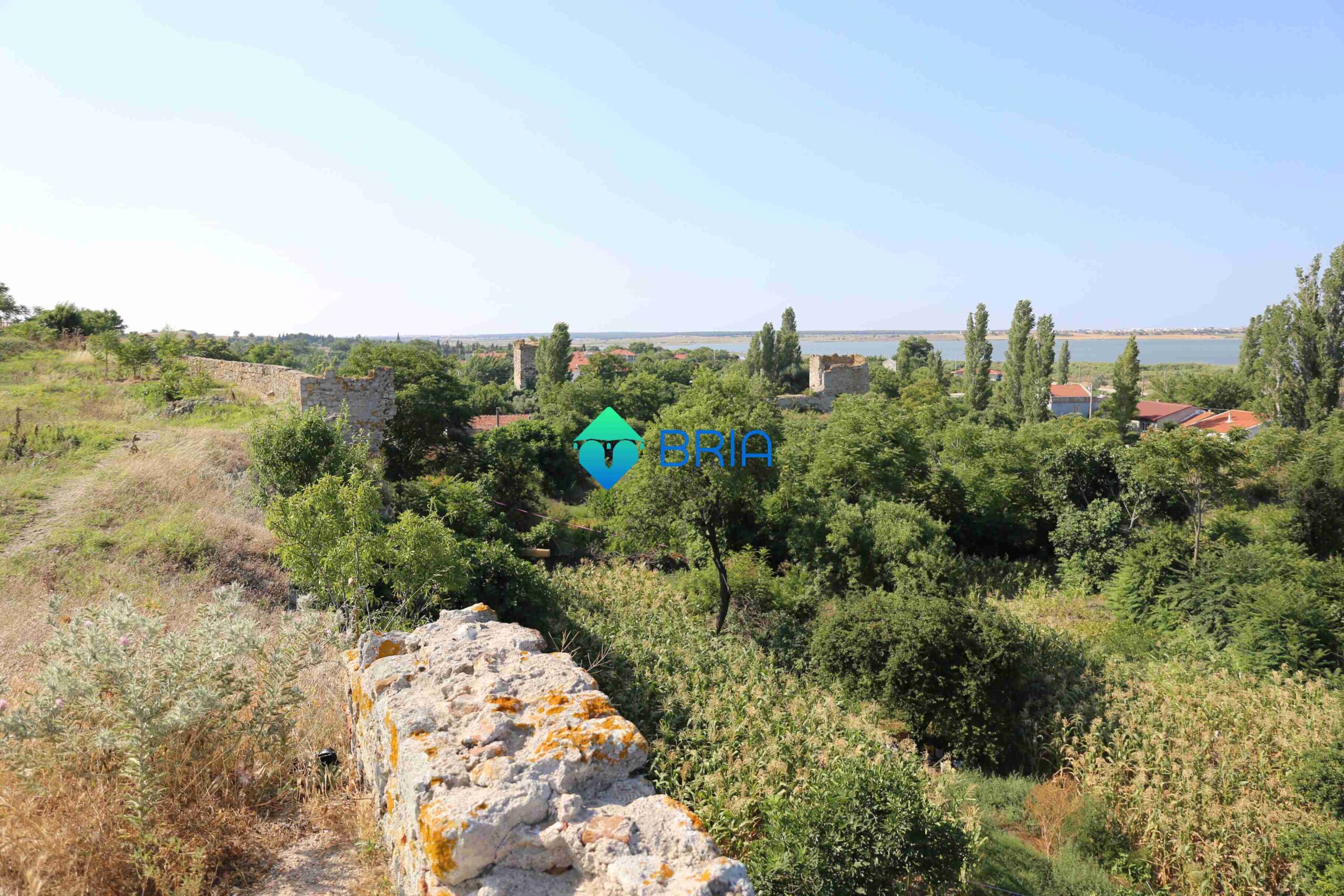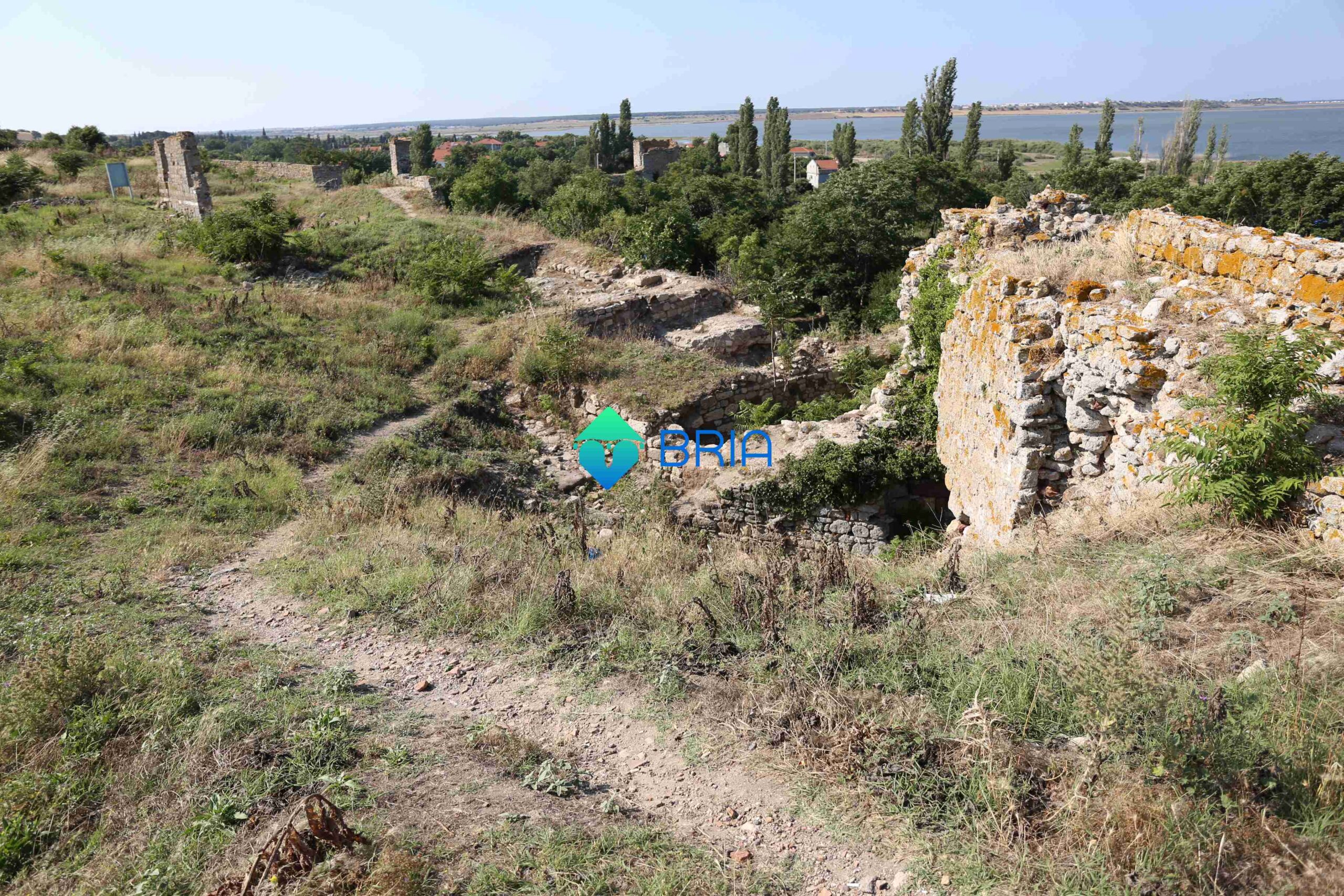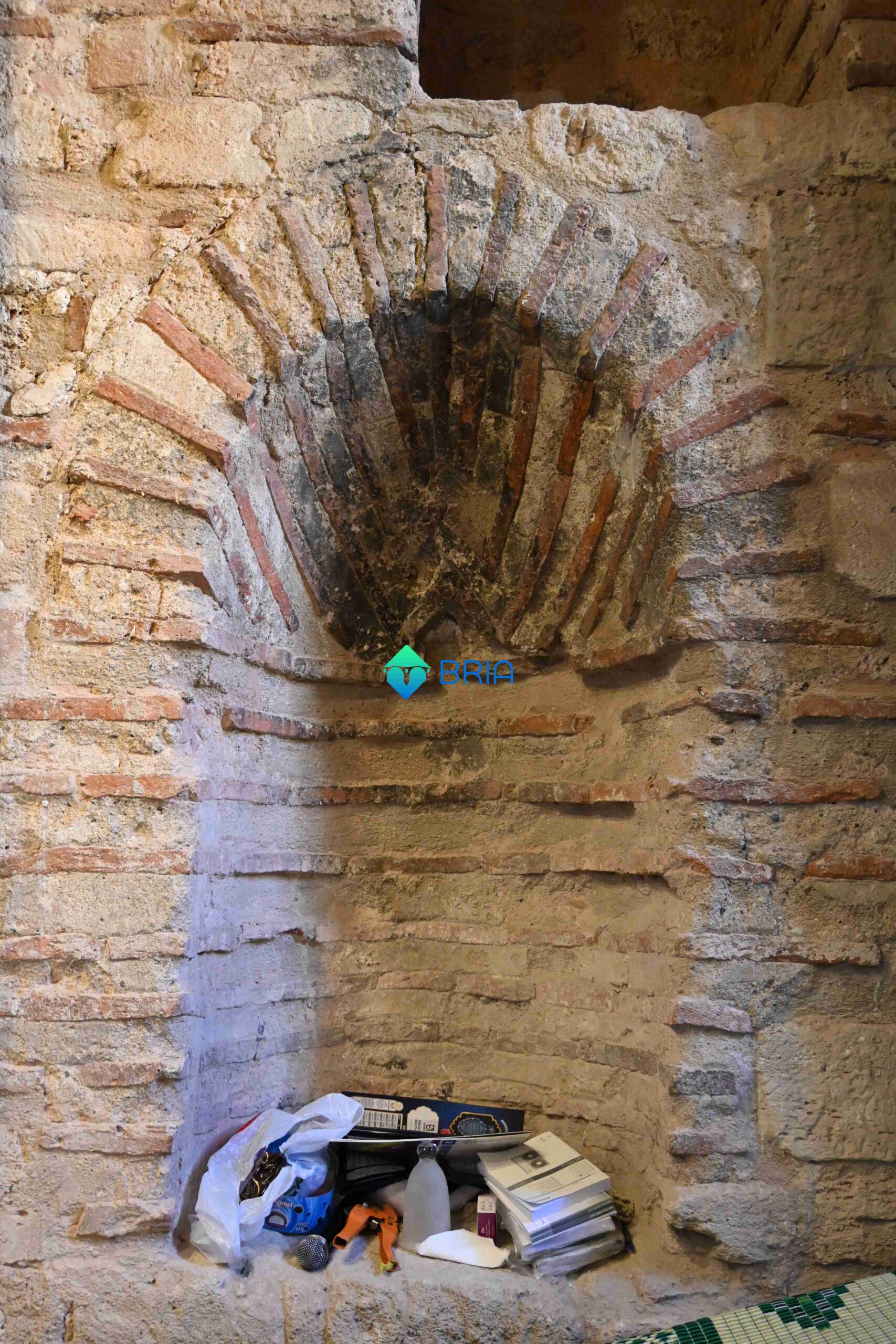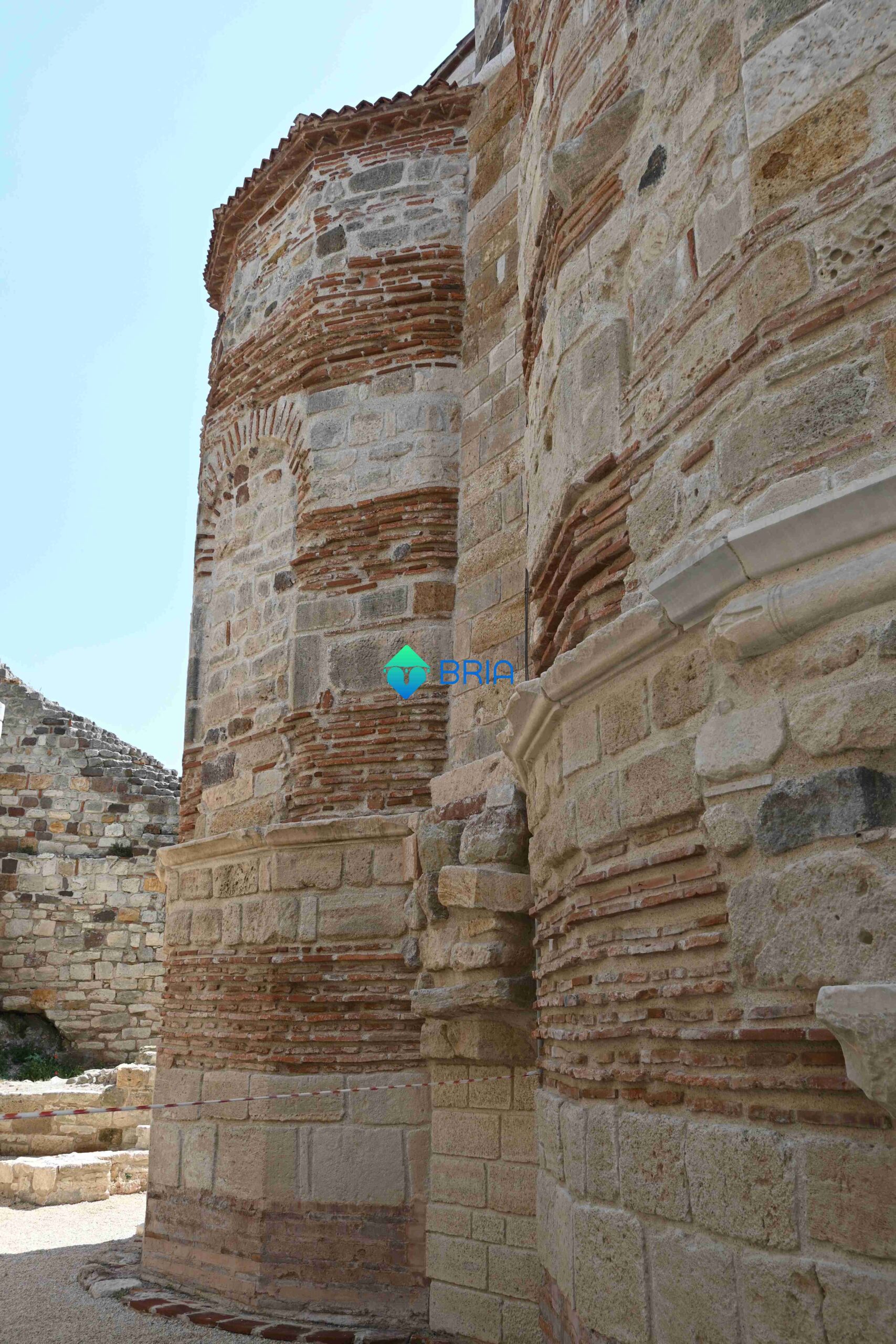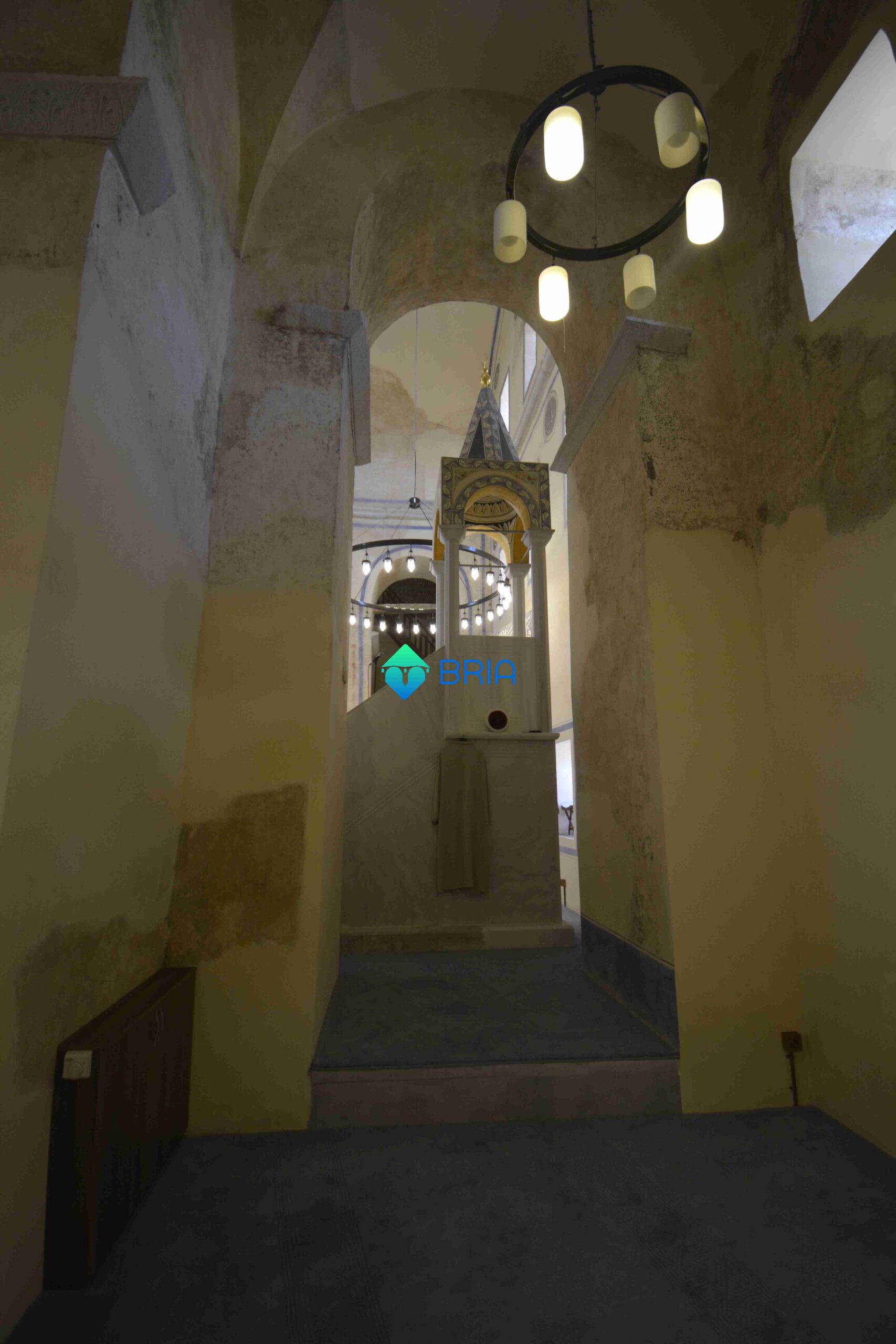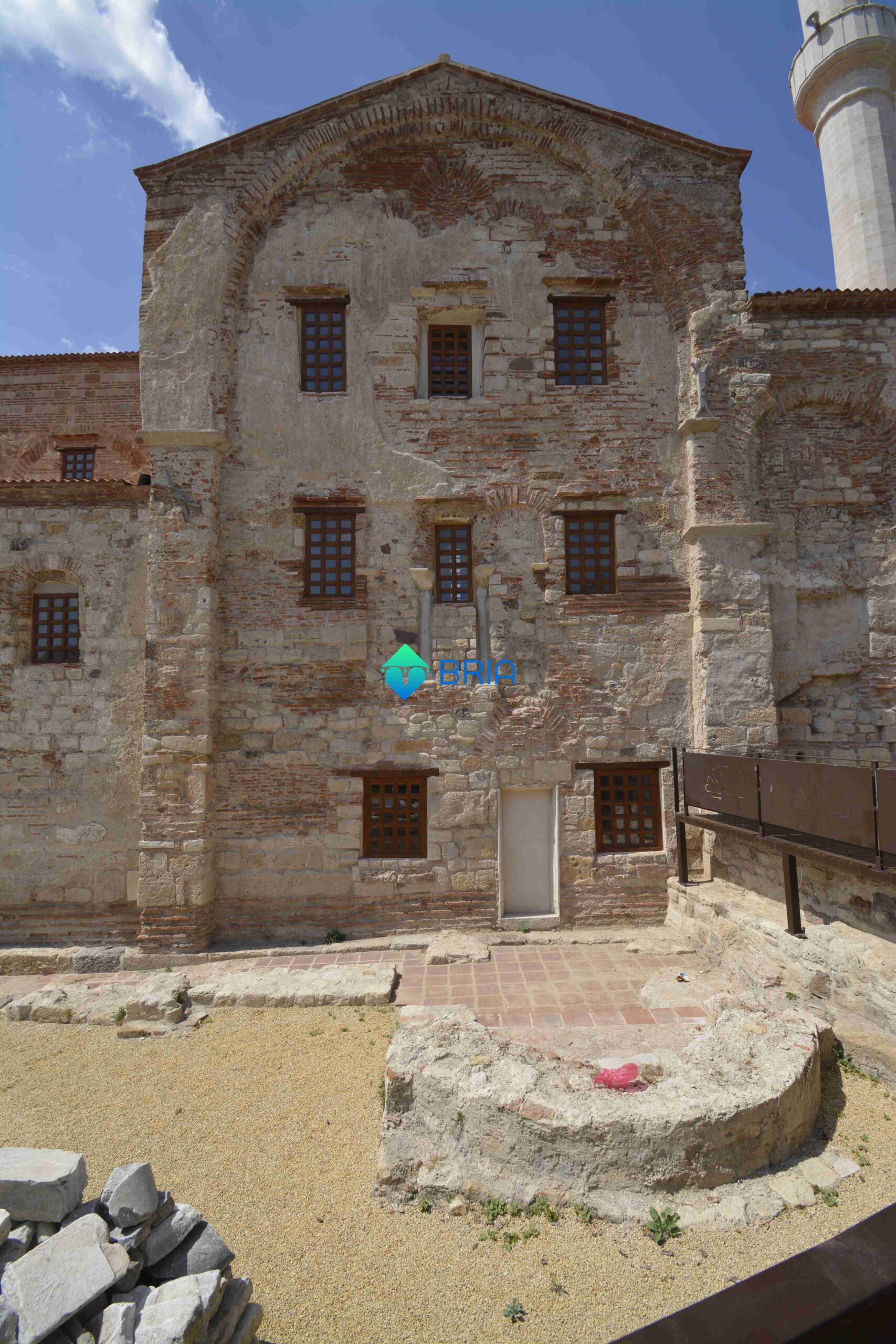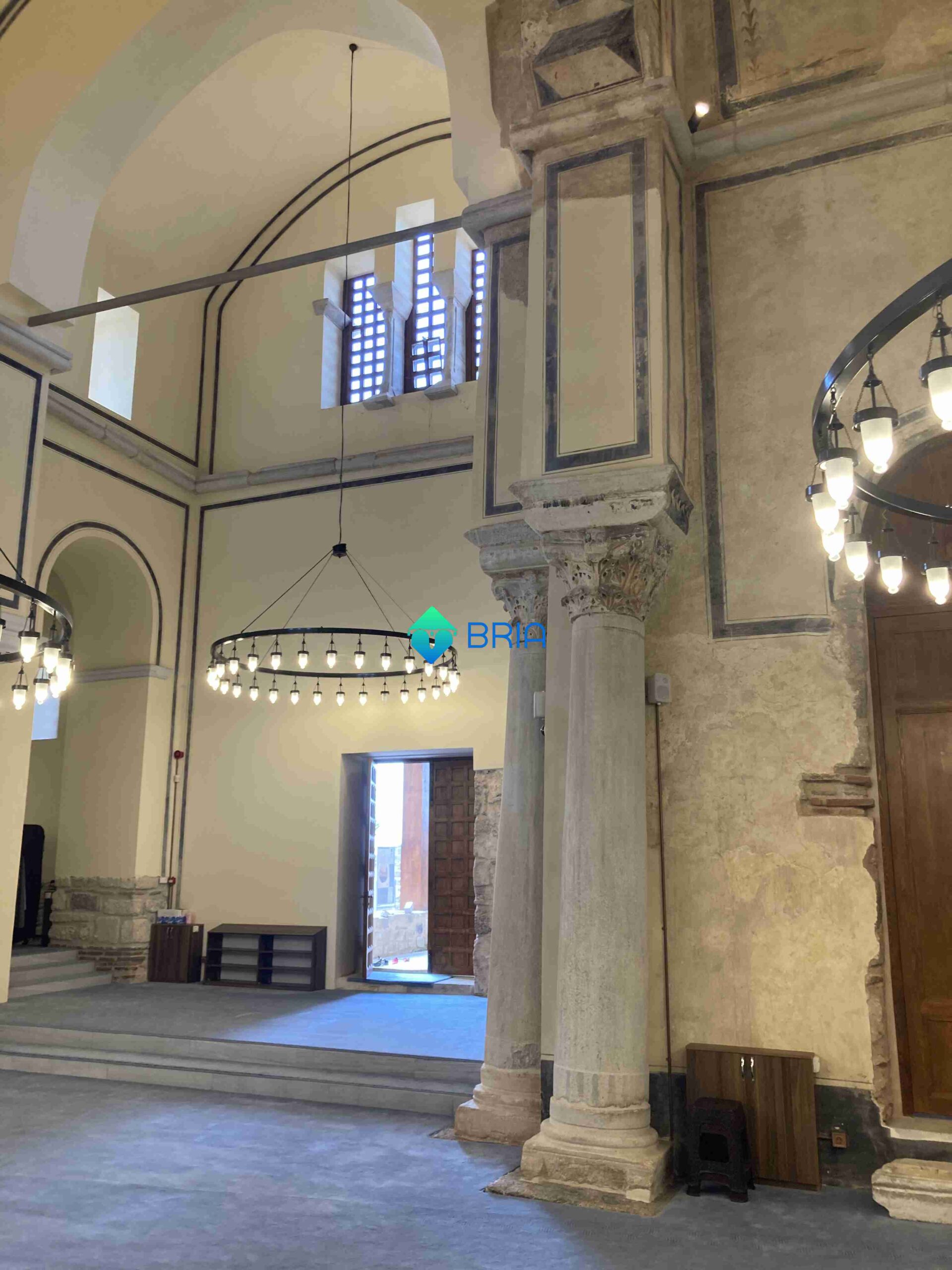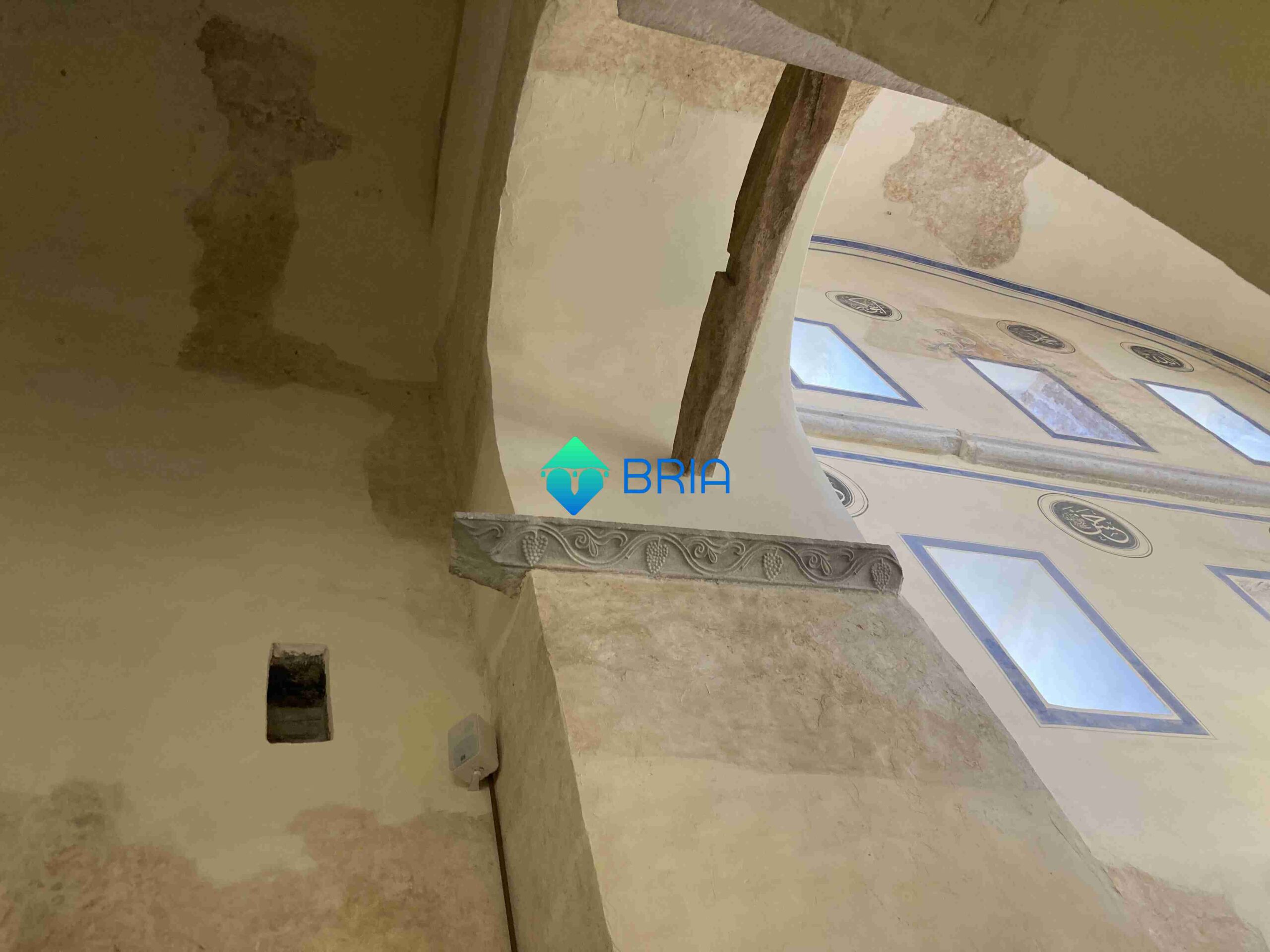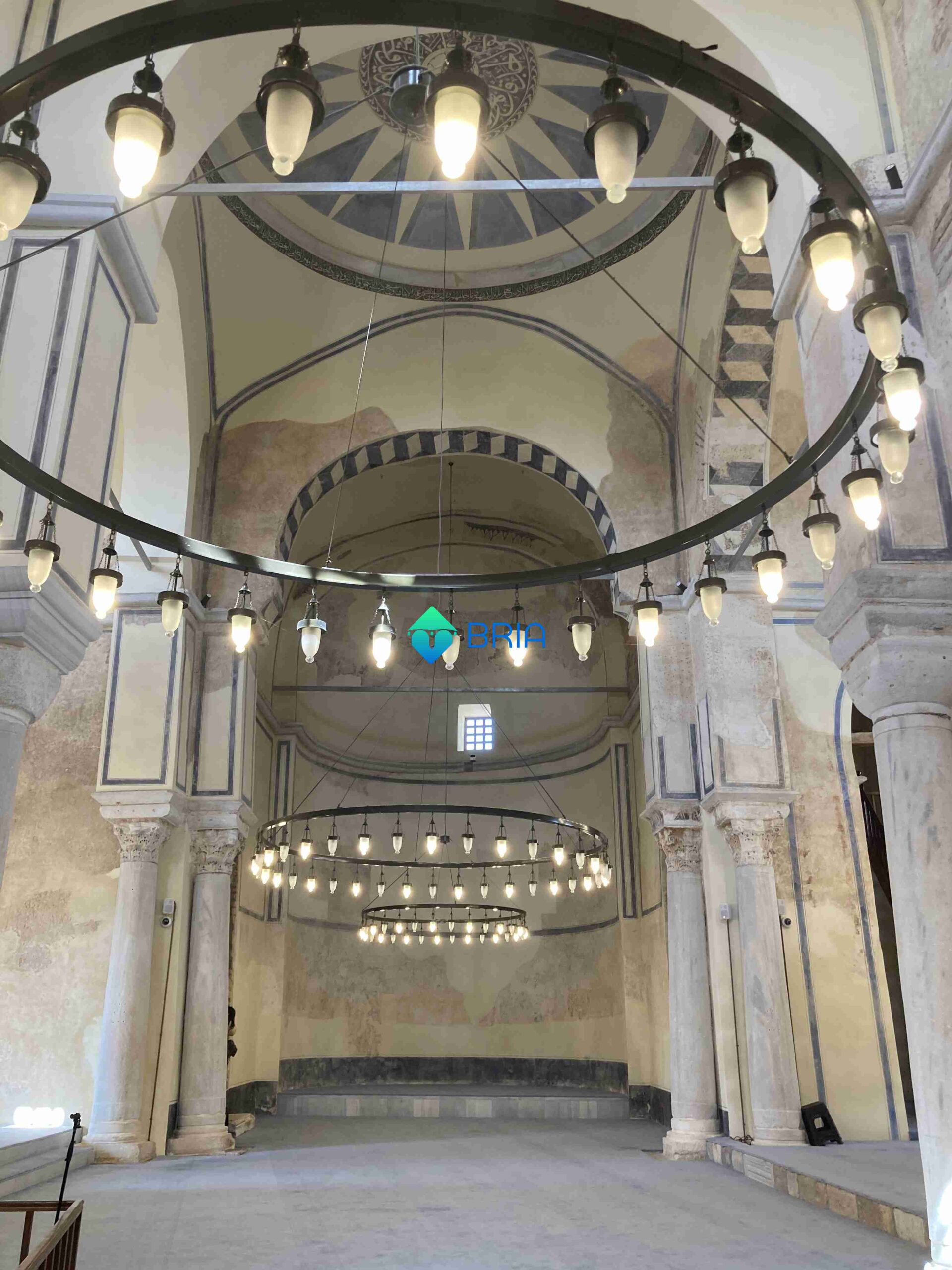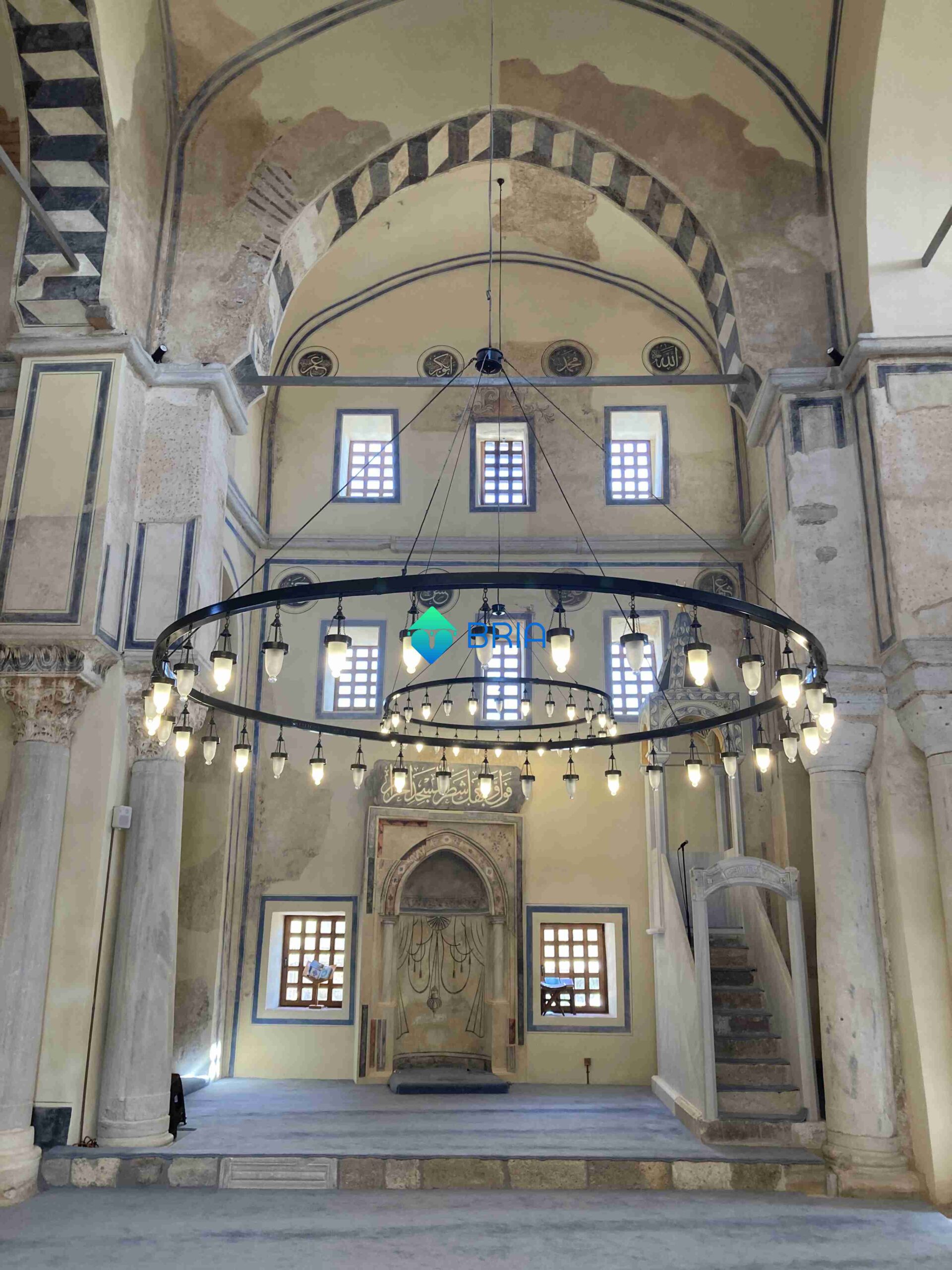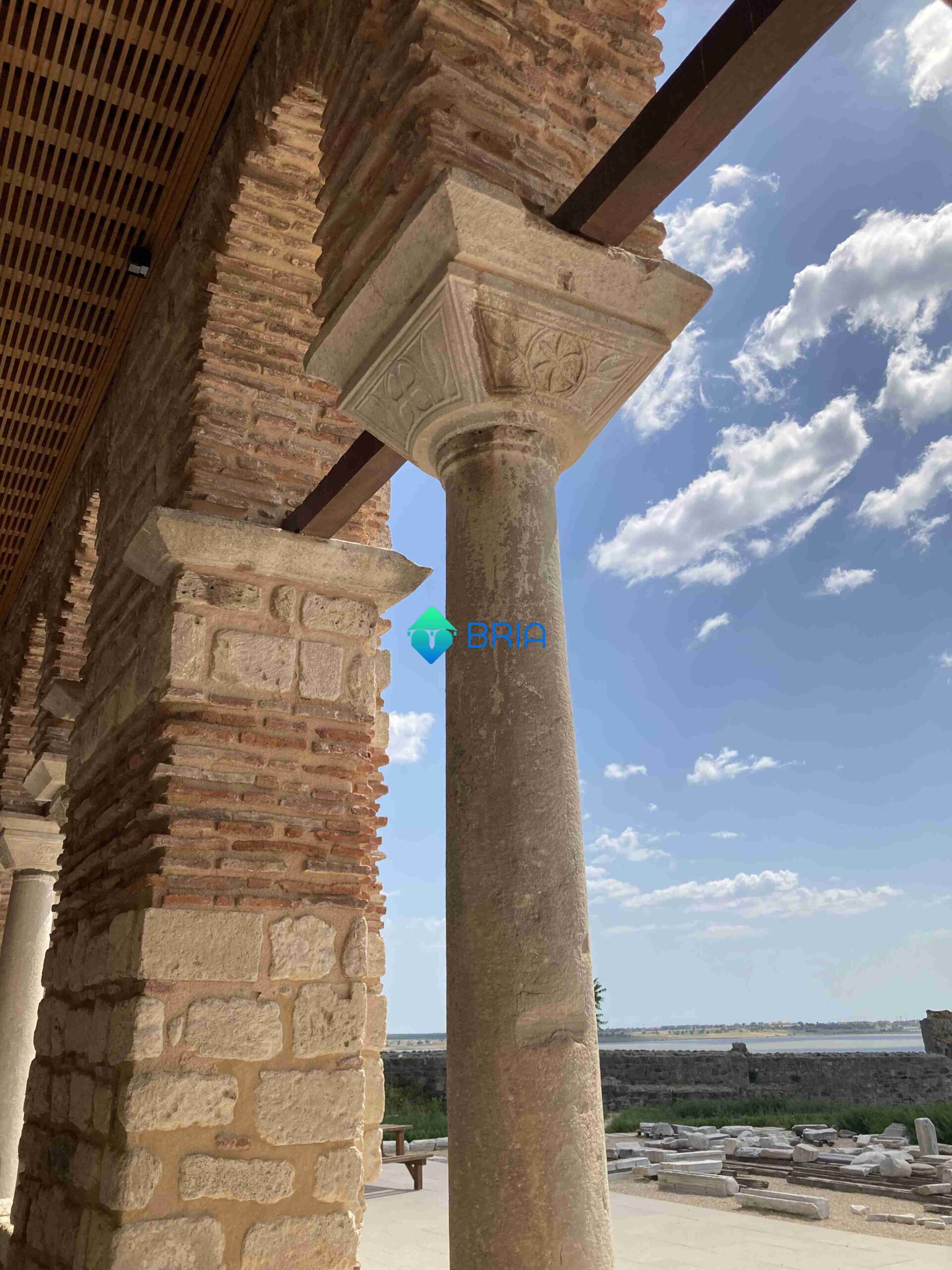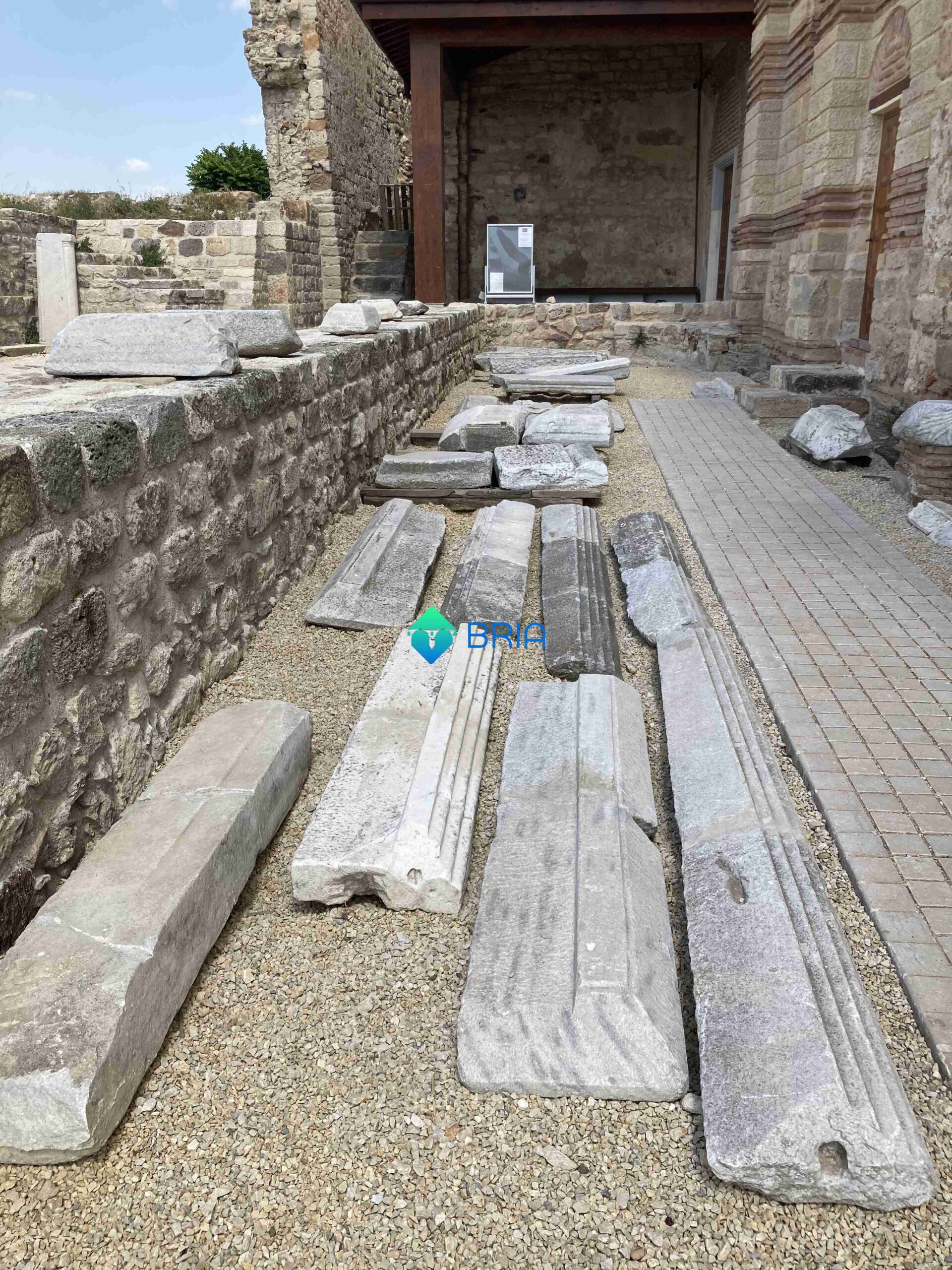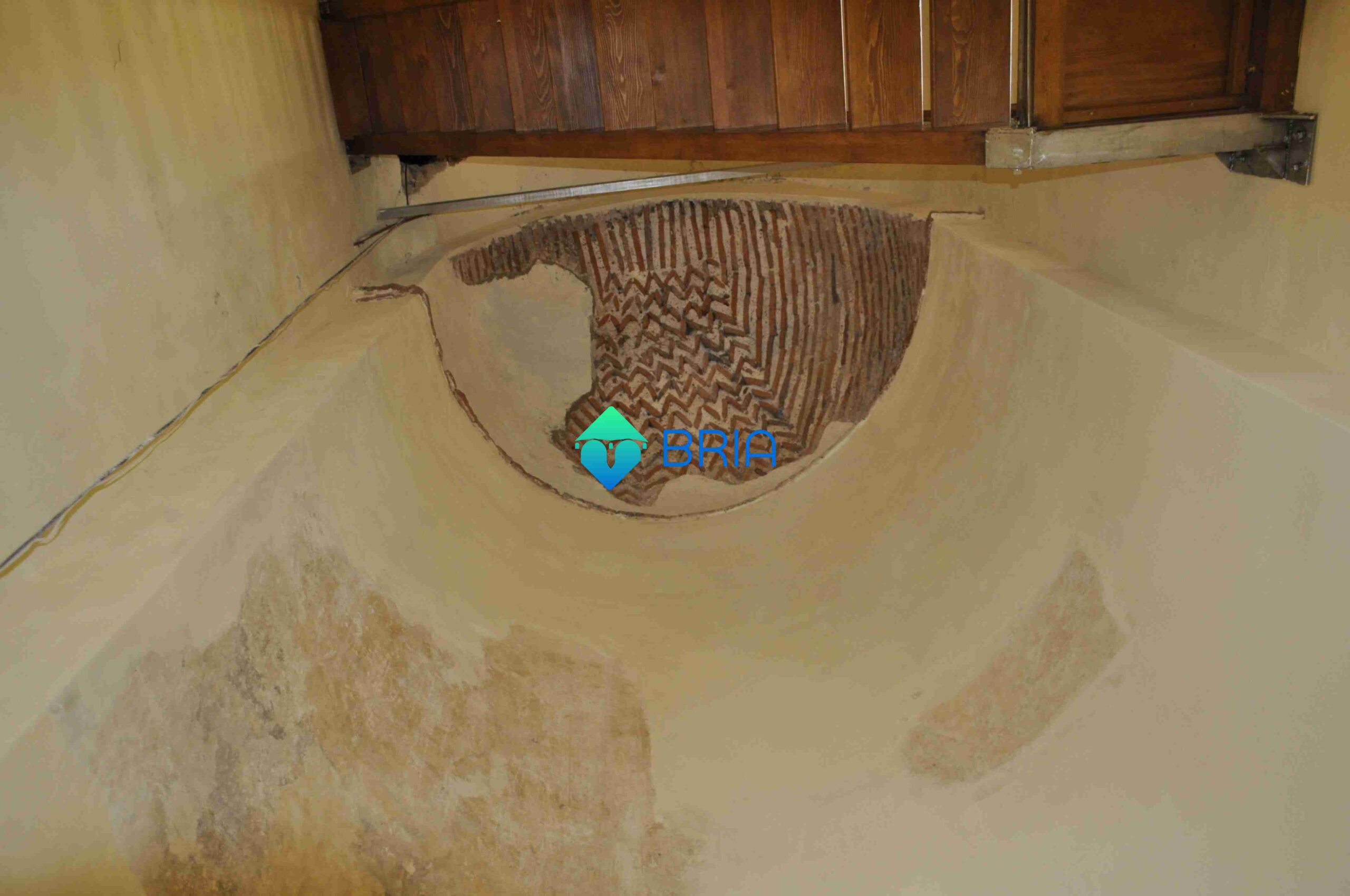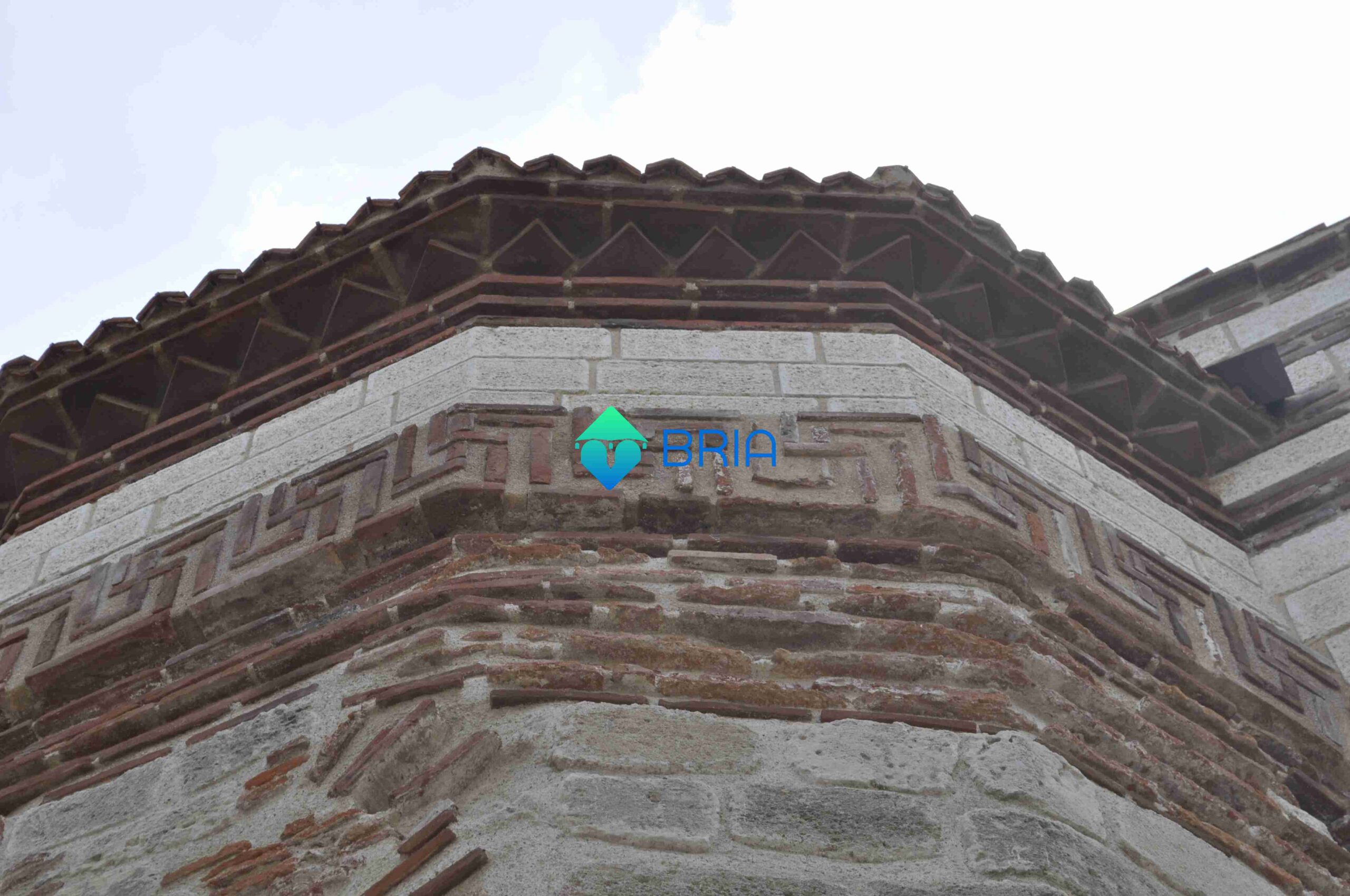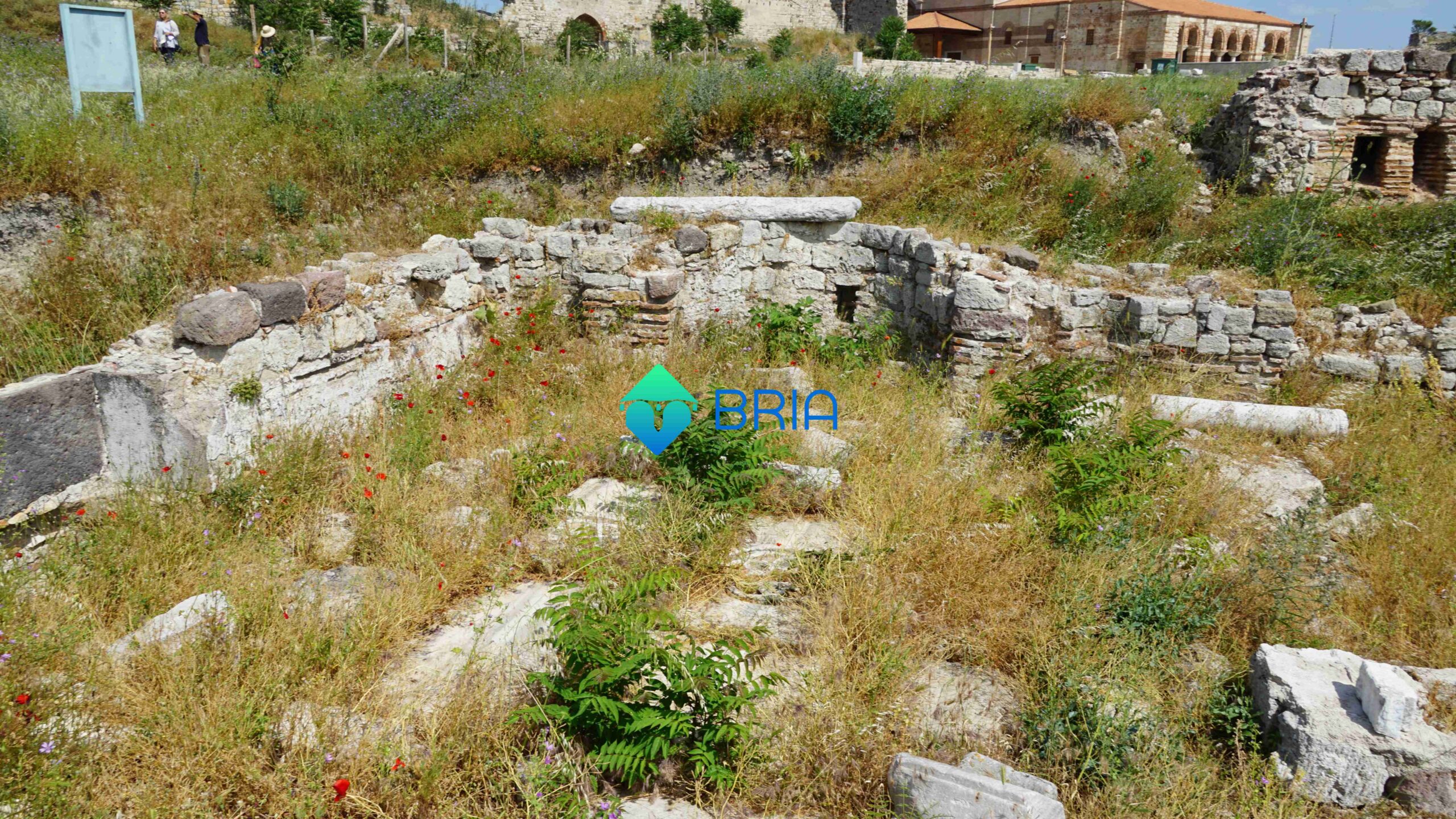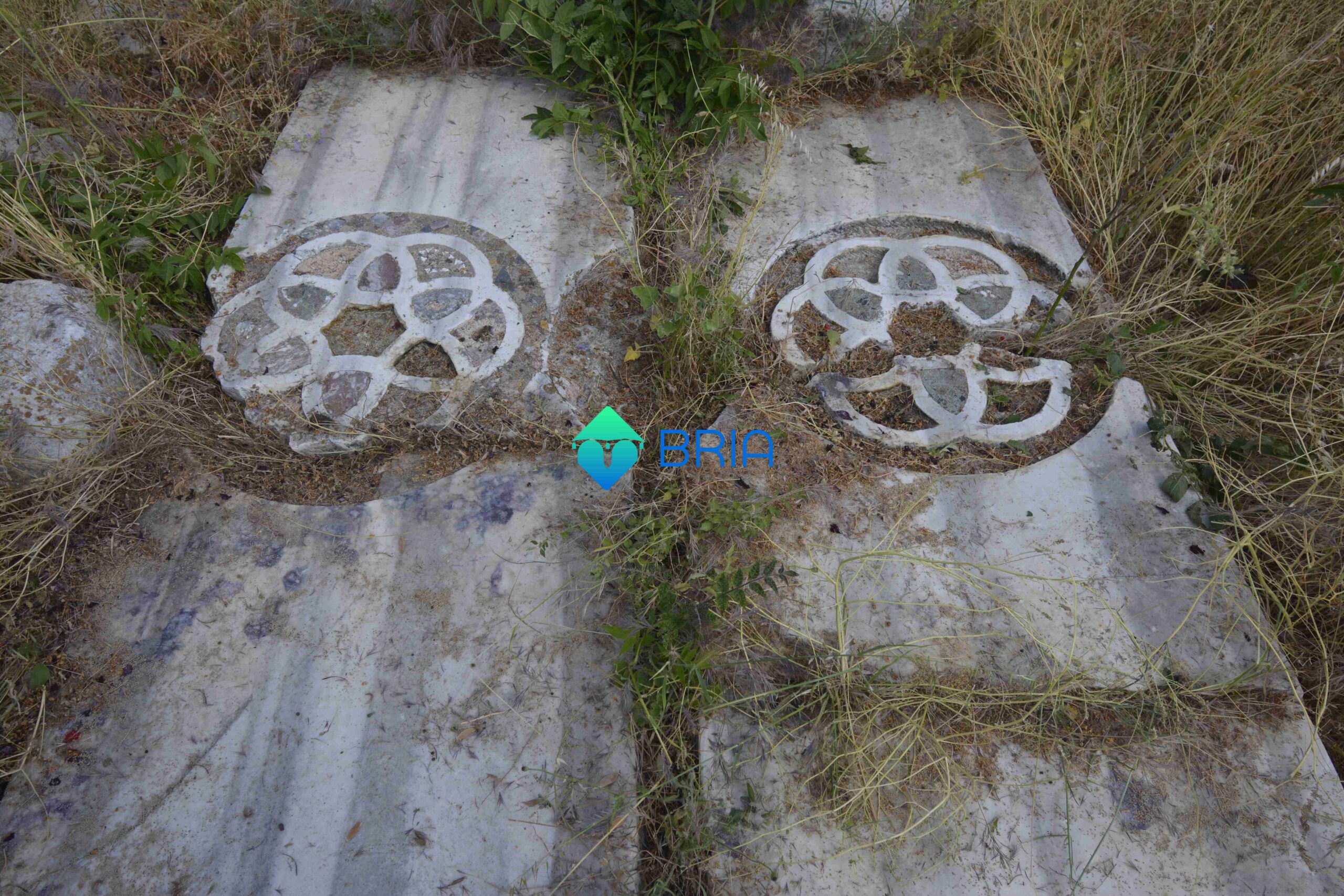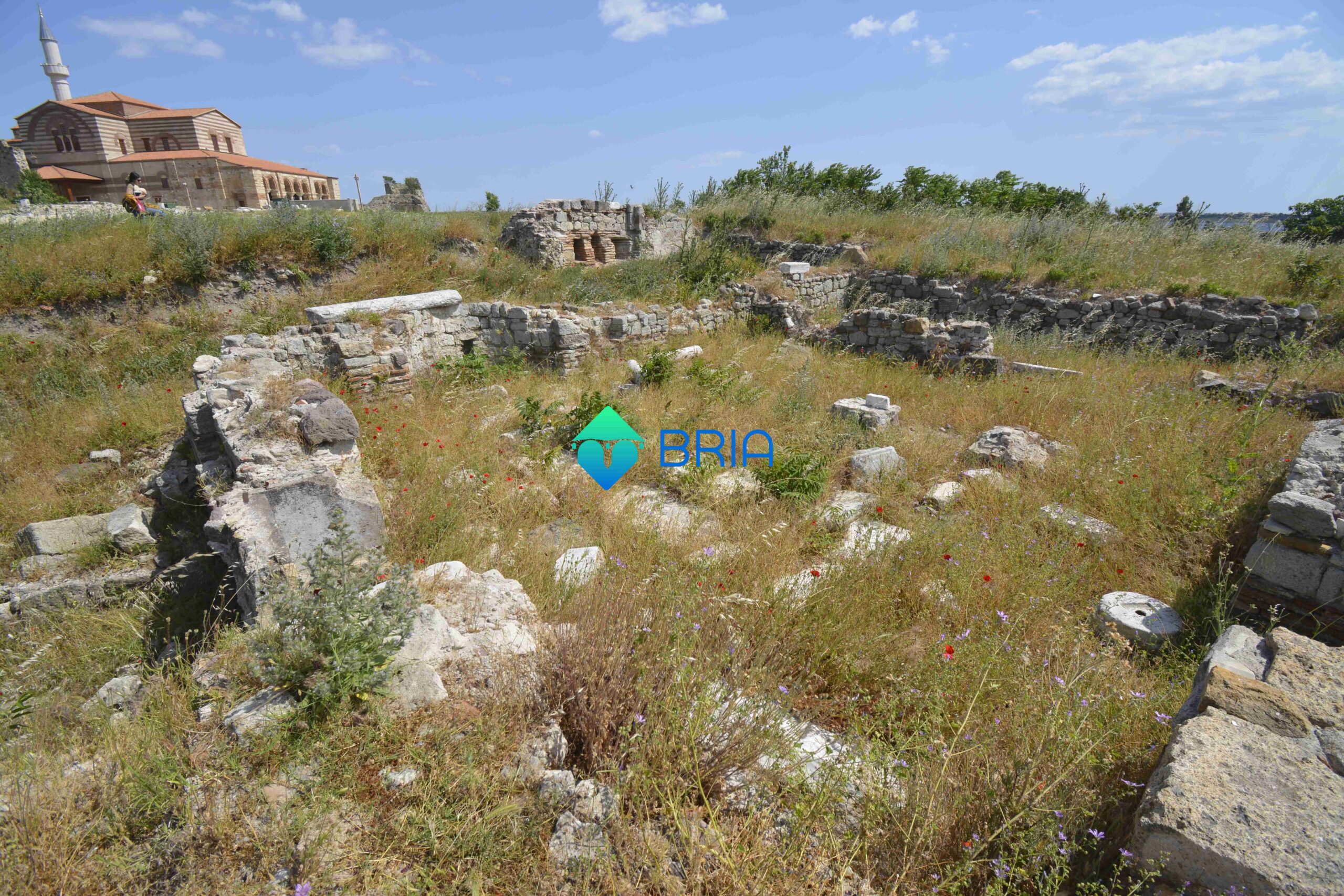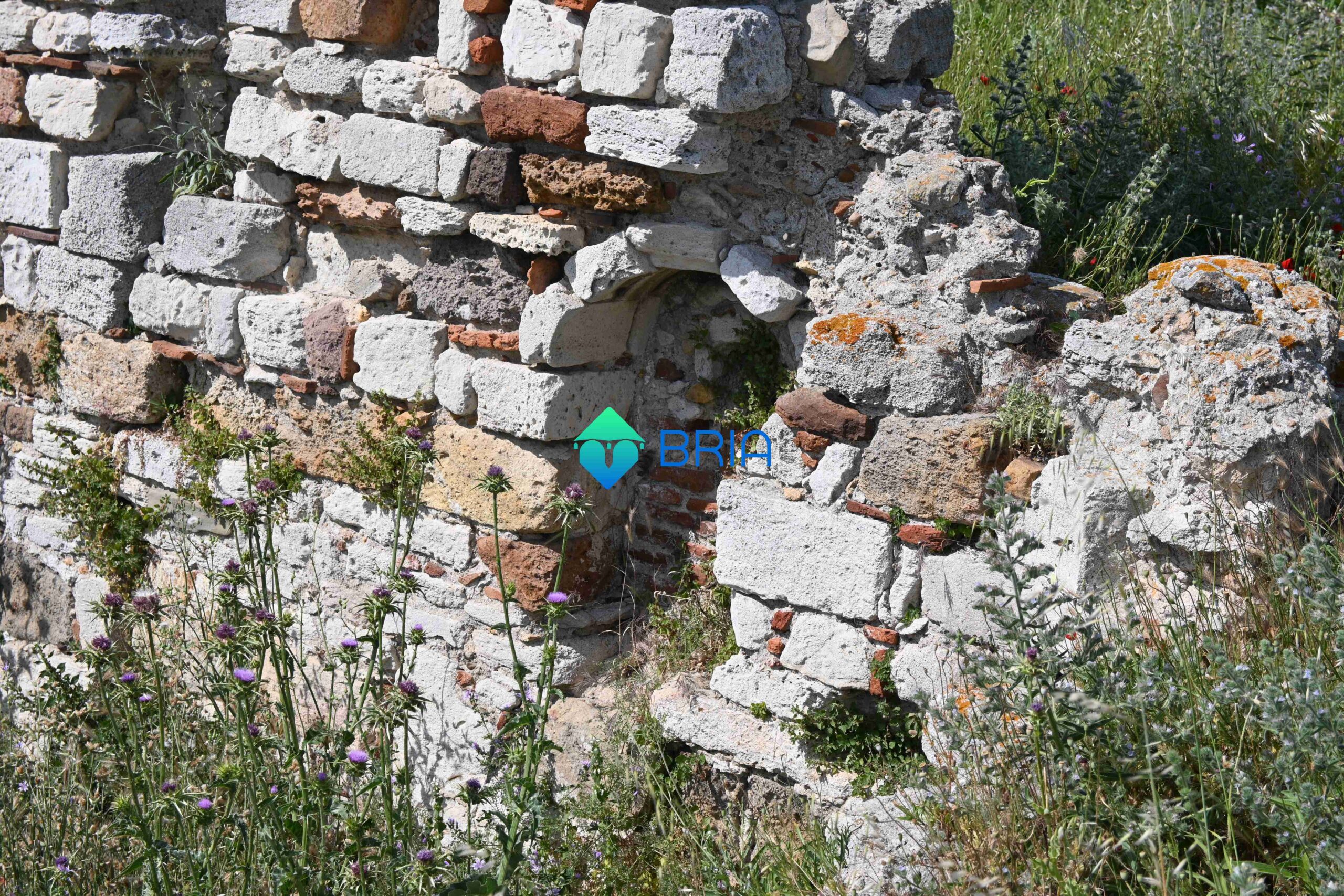Skaloti Monastery
Skaloti Monastery is a partially rock-carved settlement laid out on terraces of a rocky promontory northeast of Çavuşköy, ca. 8 km southeast of Enez. The complex has a dominant post-Byzantine phase, for it continued to function as a monastery until the early 20th century. The built structures that complemented the carved spaces, such as masonry walls and timber roofs, are now lost yet recorded in the early photographs. In addition to a large number of constructional ceramics and course wares, the site provides many glazed pottery sherds, some datable to the 13th-14th centuries.
Enez (Kral Kızı Basilica)
Kral Kızı Basilica located outside of the citadel, south-east of the city Ainos (Enez) and near the Taşaltı Lake is a five aisled basilica with a large sanctuary. Excavations carried out by various institutions between 1984-1992 and since 2008 point out that the basilica was multi-phased and was used during the Ottoman period. Although Ousterhout (2007) dated the basilica to the Transitional period (the late sixth to the ninth century) based on the masonry of the building, with the unearthing of the whole building and architectural plastic fragments the basilica is now dated to the Early Byzantine period, particularly to the Justinianic period.
Enez (Has Yunus Bey Tomb)
Has Yunus Bey Tomb is located in the lower city, near the harbour, in an old cemetery area. It was originally built as a small chapel with a cross plan scheme, and then converted into a mausoleum for the commander of the Ottoman fleet in the 15th century. Although the original construction date of the building remains uncertain, it is dated to the 14th or 15th century due to its small size and rough construction technique.
Enez (City Walls)
Enez city walls were built on the acropolis hill of the ancient city of Ainos to the east of the lagoon, Dalyan Gölü, and south of the Hebros river and dated from the ancient and medieval periods. The citadel with an oval plan extended in the northwest-southeast direction is thought to have been built in the Middle Byzantine Period and been restored in the late 13th and early 14th century. The main entrance is on the west side. There are three churches, foundations of medieval residential architecture and a large building complex within the city wall.
Enez (Fatih Mosque)
Fatih Mosque (Fatih Camii) situated inside the citadel of Ainos (Enez), is originally a large domed basilica measuring ca. 21.00 x 38.00 m. Two important restorations were carried out between 1979-1982 and 2017-2022. Though Eyice (1969) and Vocotoupoulos (1981) dated the church to the Palaiologan period (the 13th-14th centuries), Mango (1976) and Ousterhout (1985, 2007) dated it to the Komnenian period (the 12th century). Ousterhout claims that the monument is similar to the 12th-century churches of Constantinople in decorative brick patterning.
Enez (Chuch of St. Gregory of Neocaesarea)
Church of St. Gregory of Neocaesarea is a small cross-in-square church covered with a small dome on a tall drum situated inside the Ainos (Enez) city walls. The church was standing at least in the early 20th century and it was uncovered during the excavations in the 1980s. Marble architectural decoration elements and opus sectile floors were also found in the area. Although it is controversial whether the structure is dated to the Middle Byzantine Period or the 13th century, it is stated that the dome must have been built in the Palaiologan Period.
Enez (Church of Theotokos Chrysopege)
Church of Theotokos Chrysopege is a single-naved small chapel with a timber roof located in the western part of the Ainos (Enez) city walls. According to an inscription on the wall of the church, which is lost today, the building is dated to 1422/3, during the rule of Palamede Gattilusio. The church was functioning until the end of the 19th century.

